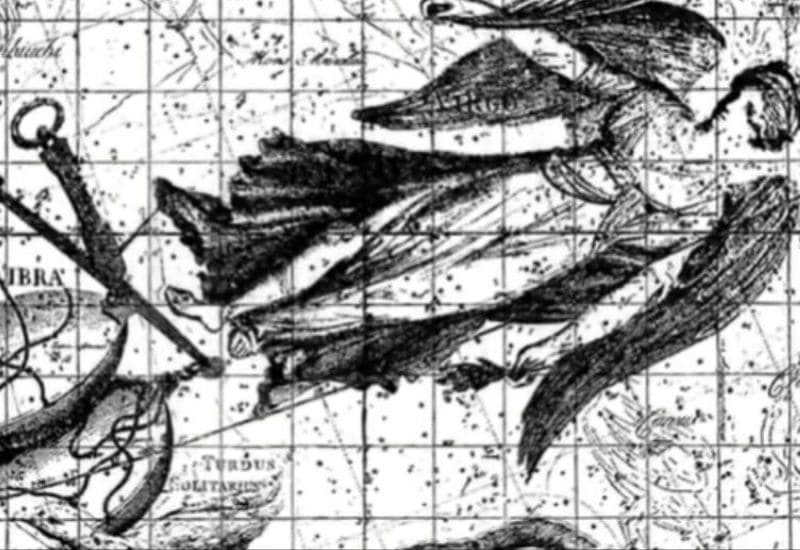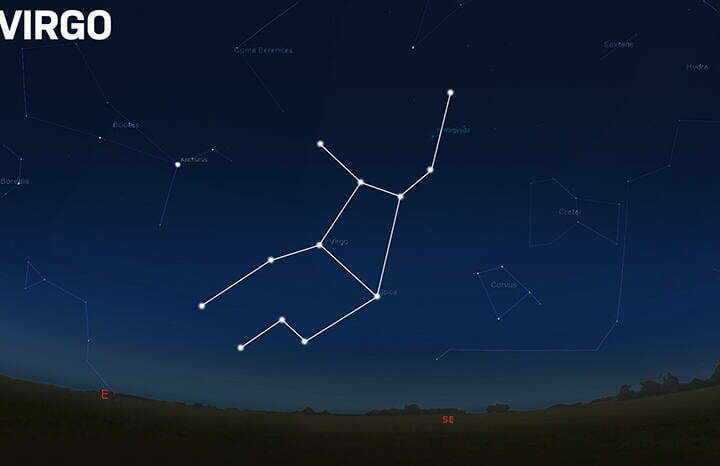
Virgo is positioned on the ecliptic and is the most extensive constellation within the zodiac. It is also one of the largest constellations in the entire sky. Spanning an area of 1,294 square degrees, it is surpassed in size only by the constellation Hydra which covers 1,302 degrees. Virgo is surrounded by Hydra, Libra, Leo, and several other constellations.
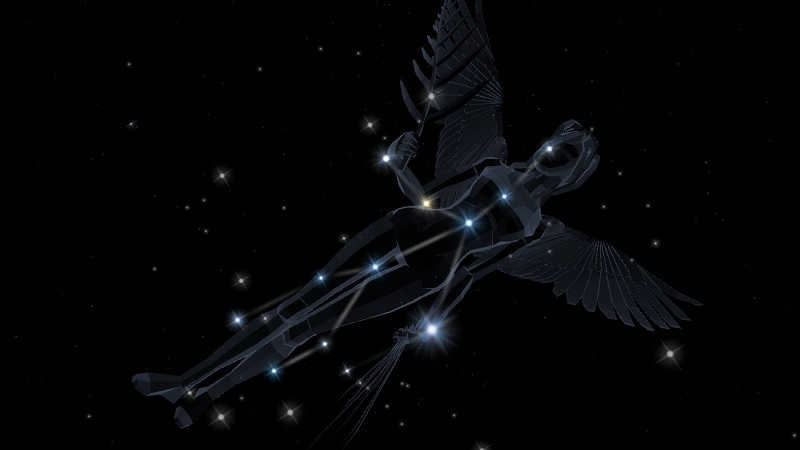
Legends and Folklore
The constellation Virgo has been known since ancient times, with numerous myths and legends associated with it across various cultures. However, its official recognition only came in the second century when Claudius Ptolemy included it in his celestial catalog.
In Greek mythology, Virgo was often associated with the goddesses Demeter, the fertility goddess who taught people how to cultivate the Earth, and Dike, the goddess of justice.
Fascinating trivia: In Latin, Virgo translates to Virgo, which means virgin. However, none of the goddesses connected to this constellation were virgins. Hence, it is more likely that the name originated from Arab countries, where it signified “winemaker”. In that context, the constellation was linked to the harvest and the commencement of the winemaking period.

Stars found in the constellation Virgo
The primary star in the constellation is known as Alpha. It bears the name Spica, derived from the Latin word for “ear of wheat.” In Arabic, it is also referred to as Atsimeh. Spica is notable for being one of the most luminous stars in the entire night sky, ranking as the 16th brightest. It is actually a binary star system, consisting of a blue giant star and its companion. The ancient Greek astronomer Hipparchus made a significant discovery about the phenomenon of precession through his study of Spica.
Fascinating fact: A curious feature of the flag of Brazil is the presence of only one star depicted above the equator, and that star is none other than Spica.
Gamma, also known as Porrima or Arich, is the second most luminous star in the Virgo constellation. The name Porrima is derived from the Latin name of one of the two companions of the Roman goddess of prophecy, Carmenta. The origin of the name Arich is uncertain, as it is only mentioned in Antonin Bechvarz’s atlas. Similar to Spica, Porrima is a binary star system, composed of two almost identical yellow-white stars.
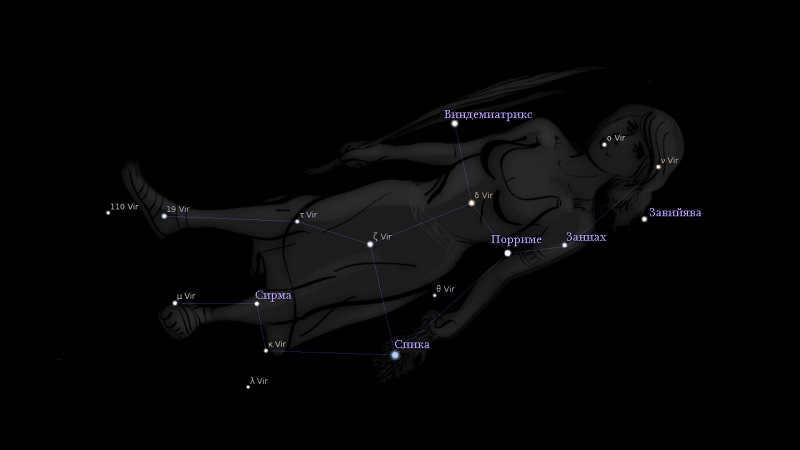
In the constellation Virgo, the bronze medal for brightness goes to Epsilon, which has the unusual name Windemiatrix. Windemiatrix is a yellow giant that has been widely recognized in the cultures of various peoples. In Arabic mythology and the Bible, this star symbolizes prophets, while in ancient Greek, it means “winemaker.”
Zeta Virgo is known as Heze, although the true meaning of this name remains unclear. Heze is a double star consisting of a blue subgiant and a companion, possibly a red dwarf.
Delta Virgo, also known as Minelauva, translates to “barking dog.” It is one of the stars that can be easily seen with the naked eye.
The final notable star is Beta Virgo, which is called Zaviyava or Alaraf. It is a star that could potentially have three giant planets orbiting around it simultaneously.
Various items
Given that Virgo is the most expansive constellation in the zodiac, it is home to a multitude of diverse celestial objects: clusters, galaxies, and asterisms. Collectively, there are approximately 1300 distinct systems within Virgo’s domain.
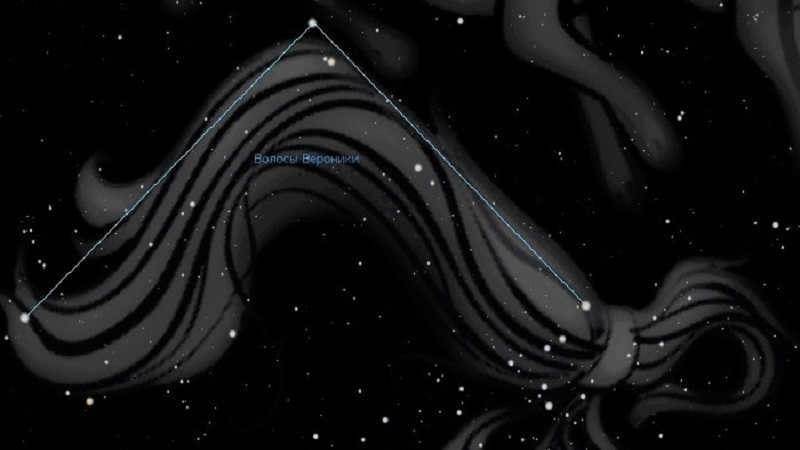

For instance, situated in the heart of the constellation is a spiral galaxy that features an intersection known as NGC 4216, which happens to be one of the largest and most brilliant. Additionally, there is an elliptical galaxy called NGC 4261, which is home to a supermassive black hole at its center. Another intriguing system is NGC 4560, which also houses the same black hole, along with two supernovae. Within the Virgo constellation, there exists a unique galactic pair referred to as the Siamese Twins – two galaxies that have merged with one another.
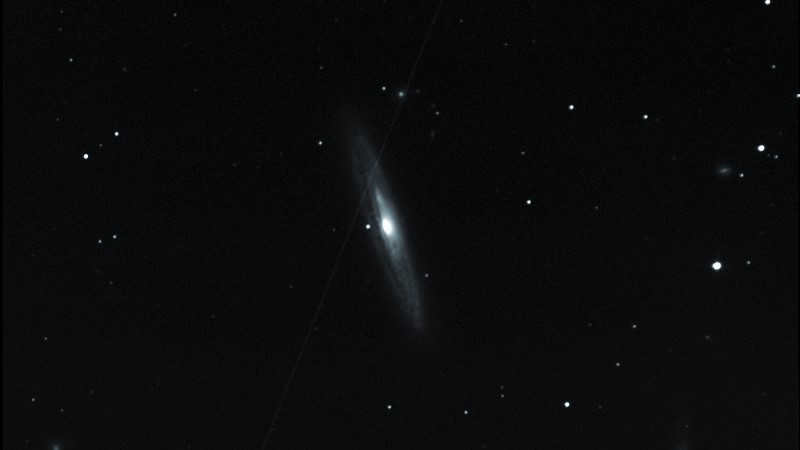
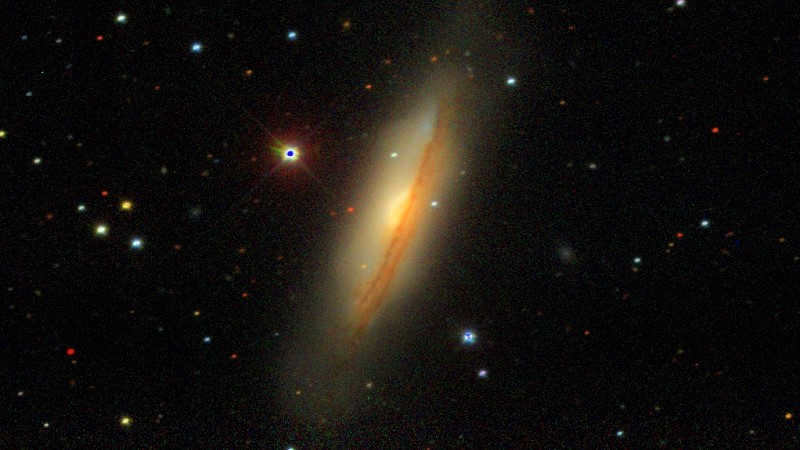
Virgo is home to another fascinating object known as 3C 273. This particular object is the most brilliant quasar in the entire night sky, and it holds the distinction of being the first one ever discovered. Scientists believe that it houses a supermassive black hole within its depths.
Observation
The best time to observe the Virgo constellation is during the months of March and April. However, it can be seen throughout Russia at any time of the year, except for the period between September 16 and October 30, when it is obscured by the Sun. To observe Virgo, one should be in latitudes ranging from +68 to -75 degrees.
The spring constellation Virgo is most ideally observed in April, when it is at its highest point in the sky and the nights are still relatively dark. It is part of the zodiac and holds significance in astrology. Additionally, it contains the point of the autumnal equinox.
For those who are interested in amateur astronomy, the constellation Virgo holds great fascination due to the multitude of captivating celestial objects it contains. In fact, it is the second largest constellation in the entire sky, trailing only behind Hydra.
Virgo’s position in the night sky
During the spring season, Virgo can be found in the southern region of the sky, positioned at a moderate elevation above the horizon, similar to how Orion appears in the winter. It lies between the constellations Leo and Libra, situated just below Volopassus, making it relatively easy to locate. Leo and Libra boast prominent stars, such as Regulus and Arcturus, that are highly visible to observers, and the alpha star of Virgo, Spica, also shines brightly and is easily noticeable.
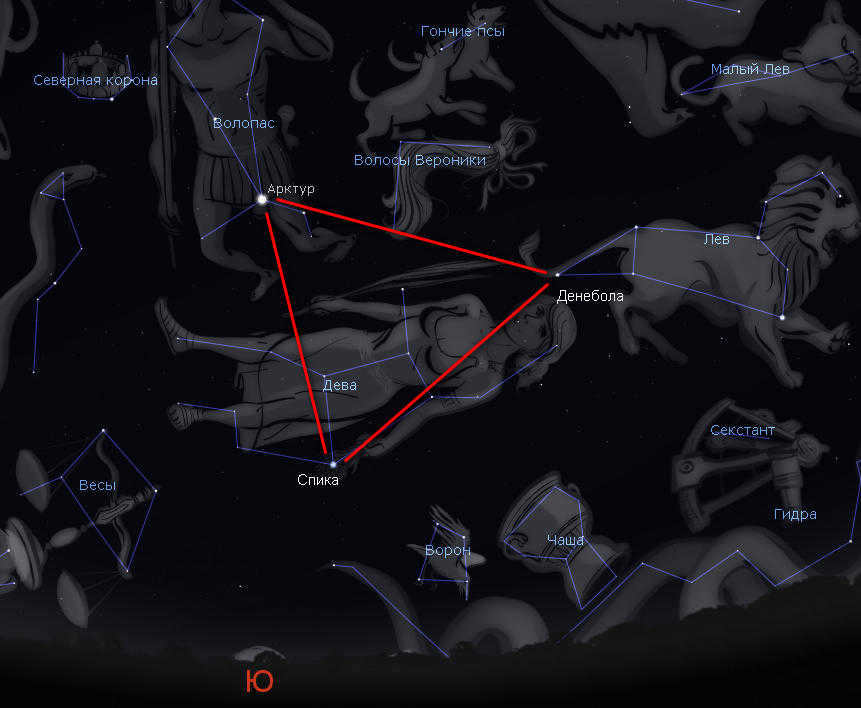
By observing carefully, you can notice that Arcturus, Spica, and Denebola, which is the farthest star in the Leo constellation, form a triangle with equal sides. Locating the Virgo constellation in the night sky is a straightforward task.
The Brilliant Stars of the Virgo Constellation
The Virgo constellation is home to an abundance of stars – over 170 can be seen with the naked eye on a clear, dark night. It comes as no surprise considering the vast expanse of this constellation, which spans 1295 square degrees, making it one of the largest in the night sky. However, despite its size, the Virgo constellation is not known for its bright stars. Nonetheless, there are a select few that stand out and deserve our attention.
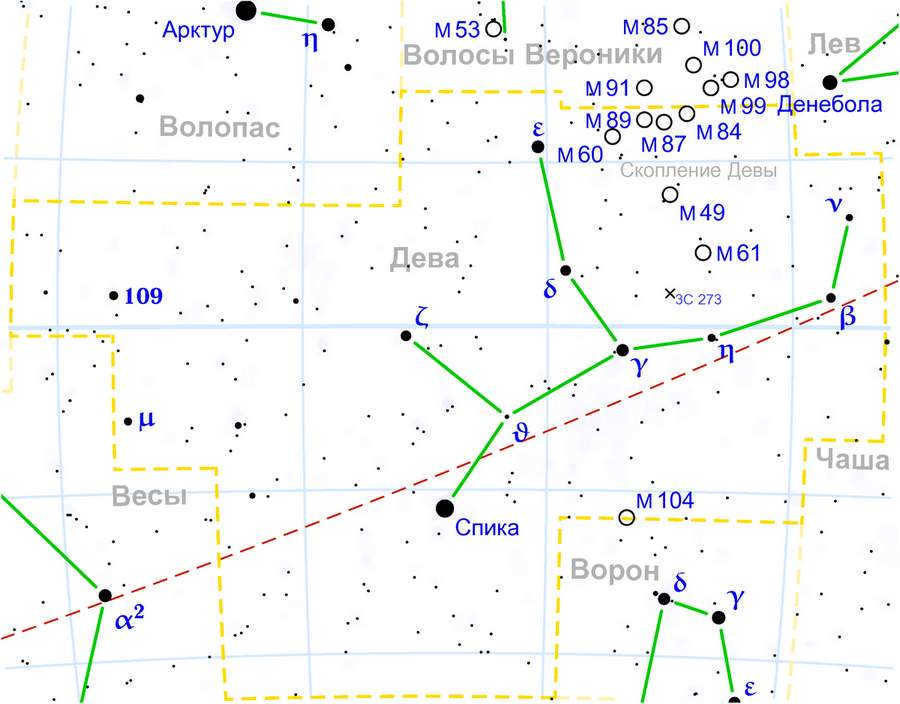
Spica: The Alpha Star of the Virgo Constellation
Spica is the most prominent star in the Virgo constellation, boasting a brightness of approximately +1.04 m. However, this brightness can vary due to Spica being a variable star, with its brightness fluctuating between +0.92 and +1.04 m over a 4-day period. Despite this variability, Spica still ranks as the sixteenth brightest star in the night sky, making it relatively easy to spot.
Situated at a distance of 262 light years from Earth, Spica is considered one of the brighter stars in our celestial neighborhood. In fact, it emits 12,100 times more light than our sun. If Spica were any closer to us, it would be the brightest star in the sky.

The Spica system is composed of a duo of scorching stars.
These two stars are positioned at a mere distance of 0.12 a.u. apart. Consequently, as a result of the mighty tidal influence, their shape is elongated and elliptical, rather than spherical. When these “handballs” rotate, we observe either a larger or smaller surface area, leading to fluctuations in the overall brightness of the system. Furthermore, Spica-A is classified as a pulsating variable star of the Cepheid variety.
The constellation Virgo symbolizes Demeter, the goddess of fertility, who holds ears of wheat in her hand. Spica represents those ears, which is why its name is translated from Latin.
Incidentally, it was the observations of Spica that enabled the ancient Greek astronomer Hipparchus to uncover the phenomenon of precession – the shift of the vernal equinox due to the Earth’s axis rotation. Additionally, these observations allowed him to precisely compute the duration of a year in days.
Fascinatingly, Spica is portrayed on the flag of Brazil, where it stands alone in the northern hemisphere. Consequently, the most brilliant star in the Virgo constellation was not only influential in ancient times but continues to hold significance today.

The flag of Brazil is quite unique. The constellation Virgo is represented on the flag by the star Spica, which is located alone in the northern hemisphere.
Spica, also known as the alpha of the constellation Virgo, is situated near the ecliptic, which is the path that the planets and the Moon follow. As a result, there are rare occurrences when the planets and the Moon align with Spica, causing it to be temporarily covered. Additionally, every month, the Moon comes close to Spica, sometimes even covering it completely. Furthermore, on October 16th of every year, the Sun passes just 2 degrees away from this star.
Gamma Virgo is a binary star system
Gamma Virgo, also known as γ Vir, is the second most luminous star in the constellation Virgo. It stands out because it is composed of two almost identical yellow-white stars that belong to the spectral class F. With a magnitude of +2.72-2.78 m, it shines brightly in the night sky. The separation between the two stars in this system is relatively small, measuring about 40 astronomical units, which is comparable to the distance between the Sun and Pluto. As a result, they can occasionally be observed using a beginner-level telescope.

The Porrima system is known as the gamma star of the Virgo constellation.
Both stars in this system are significantly hotter than the Sun, with surface temperatures reaching up to 7000 degrees Celsius. They have an orbital period of nearly 169 years. At times, they move apart to their maximum distance, making them visible through amateur telescopes. At other times, they come close together, appearing as one star.
The last time they converged was in 2007, and by 2020, they will separate again, providing optimal conditions for observing them, even with small telescopes.
Vindemiatrix: The Enigmatic Giant
Epsilon (ε), the third brightest star in the constellation Virgo, stands as a celestial marvel. Positioned 102 light years away from Earth, this yellow giant possesses a seemingly unremarkable brightness of 2.83 m when observed in the night sky. However, beneath its unassuming facade lies a captivating enigma.
Contrary to expectations, this yellow giant emits a staggering 83 times more light than our own Sun, despite having a surface temperature that is slightly colder or approximately the same. This anomaly can be attributed to its massive size, which is 12 times larger than that of our Sun, resulting in a significantly larger surface area. Yet, this is not the most intriguing aspect of Vindemiatrix.
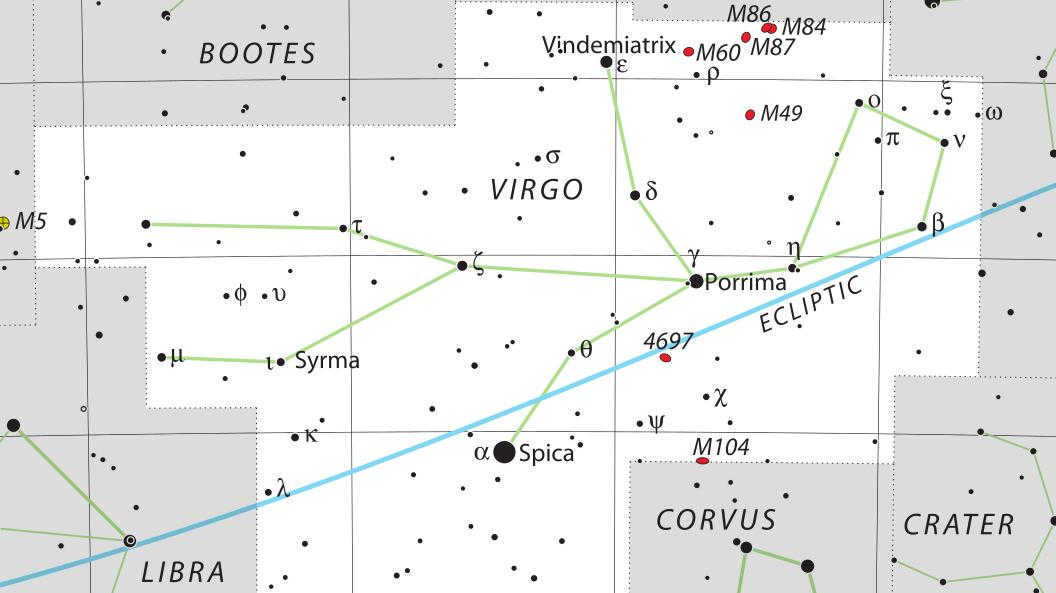

The star Windemiatrix can be found in the upper region of the Virgo constellation.
This particular star is currently going through a transitional phase. It has already depleted all of its hydrogen, leaving scientists unsure of its internal composition. It could either be in the early stages of burning helium and converting it into carbon, or it may have already initiated this process. Additionally, Windemiatrix possesses 15% more heavy elements compared to the Sun.
Interestingly, Windemiatrix is considered a significant source of radio emissions and ranks third in this aspect. In the X-ray spectrum, Epsilon Virgo emits radiation that is 300 times more intense than that of the Sun.
Additionally, it is a binary star. The second component possesses a luminosity of 11.7 m and is situated 248.7″ away from the primary component. There exists a hypothesis indicating that Windemiatrix is a member of the Hyades, a dispersed cluster located in the Taurus constellation.
Galaxies within the Virgo constellation
Naturally, within such an expansive cluster, one can discover numerous remarkable stars, each possessing its own unique characteristics. However, the Virgo constellation is primarily renowned for its status as the center of the Virgo Cluster, an immense collection of galaxies. It is also the location of the initial quasar ever discovered, which can be attempted to be observed through a telescope.
Quasar 3C 273
This celestial body appears as an ordinary star, having a magnitude of 12.8 m. In order to locate it, a telescope with a mirror of at least 150 mm is required. However, if you possess expertise in this field, you may attempt to spot it using a smaller instrument.
Despite its unimpressive appearance, it is crucial to acknowledge that this star is actually one of the most enigmatic entities in the entire cosmos – a quasar. The light emitted by this celestial object traveled a staggering distance of 2.44 billion years before finally reaching your eyes. During the time it took for those photons to traverse such vast distances, life on our planet had only recently emerged.
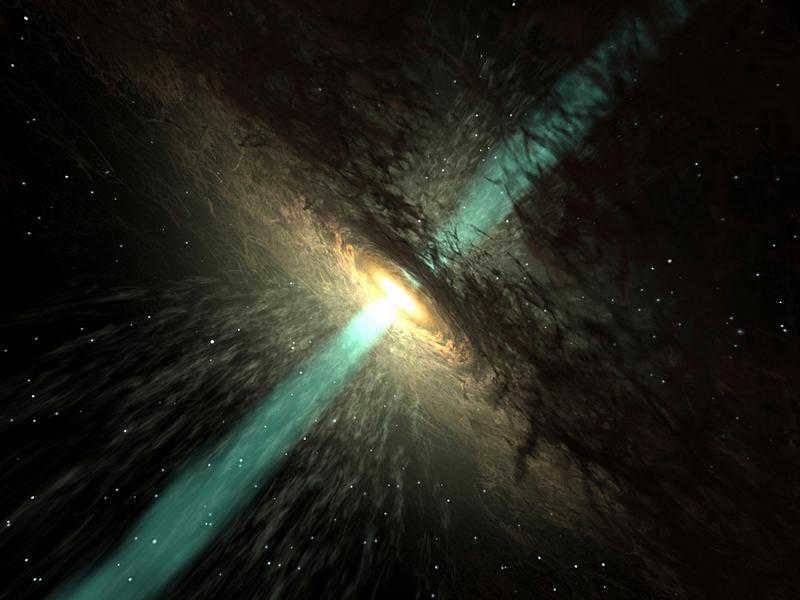
Despite its humble appearance, the quasar 3C 273 emits a staggering 100 times more light than our entire Milky Way galaxy and boasts a mass approximately 886 million times that of the Sun. Quasars are not ordinary stars. Instead, they are the active nuclei of galaxies in the early stages of formation, featuring a supermassive black hole at their center and an accretion disk of matter swirling around it.
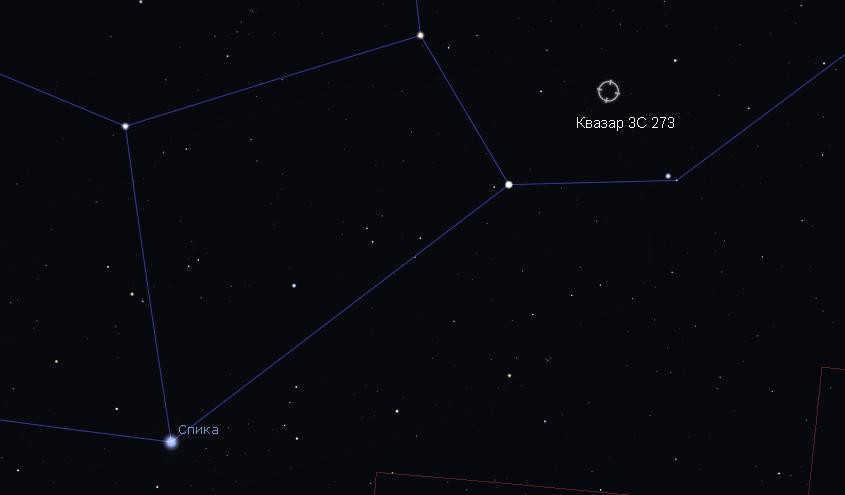
The position of the quasar 3C 273 in the Virgo constellation.
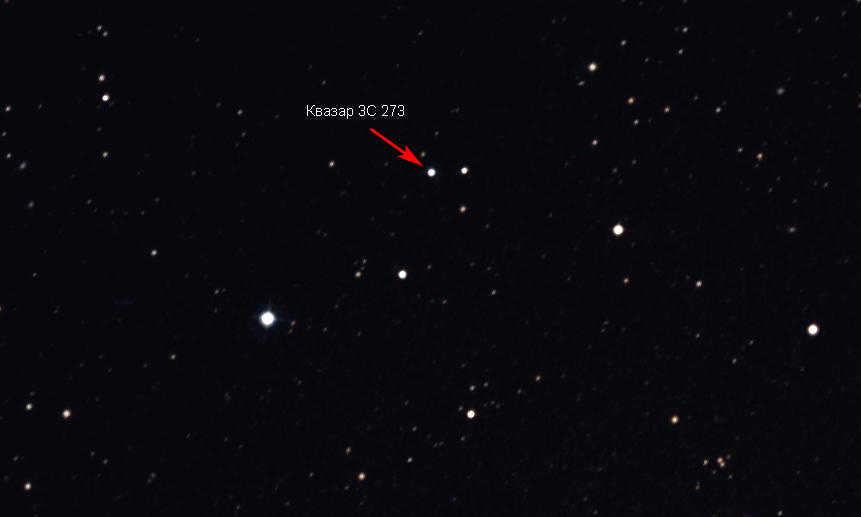
The vicinity of quasar 3C 273.
The most luminous quasar known emits light equivalent to 300 trillion stars like the Sun and is situated 12.8 billion light years away from us. However, quasar 3C 273 stands out as the brightest in the sky and the most easily observable, even with amateur telescopes. Other quasars require more advanced equipment for observation.
Quasars serve as incredibly potent energy sources across all wavelengths. Despite their immense power, they exist billions of light years away and remain poorly comprehended. Thus, when you gaze upon quasar 3C 273, you are witnessing one of the most powerful and enigmatic entities in the Universe, far beyond a mere star.
The Virgo cluster is an enormous collection of galaxies
Situated in the top-right region of the Virgo constellation lies the epicenter of one of the most expansive assemblages of galaxies. Known as the Virgo cluster, this celestial formation encompasses over 2000 galaxies, each teeming with countless billions and trillions of stars!
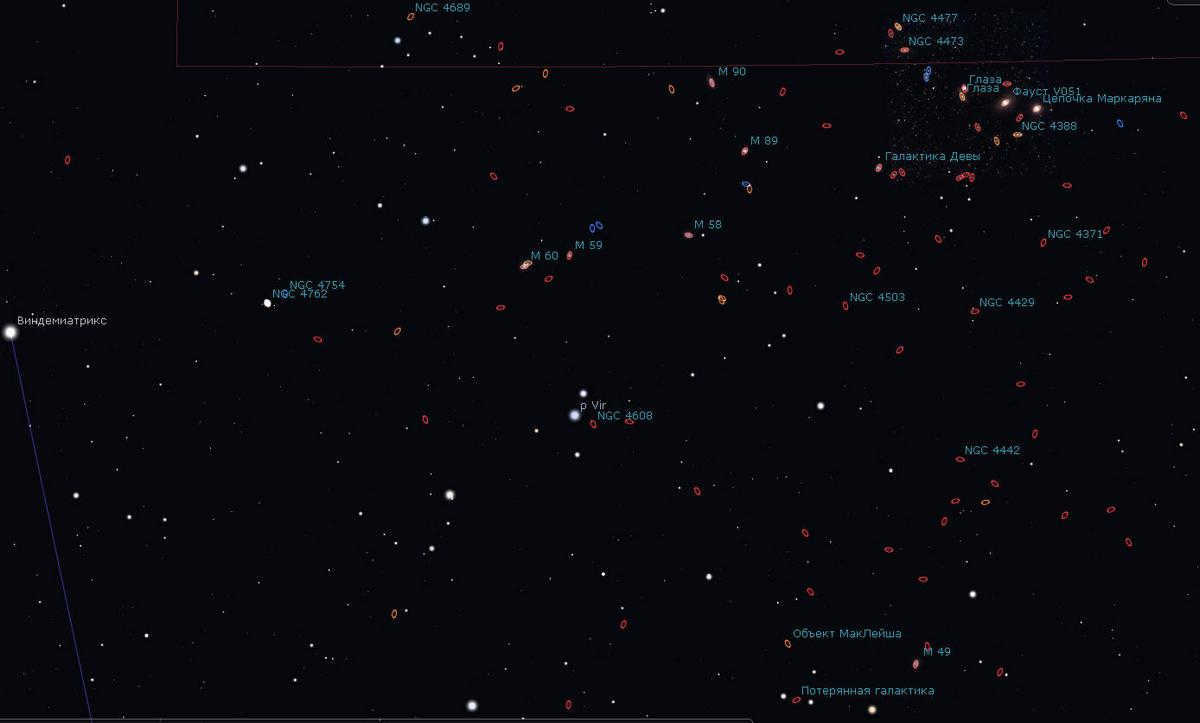
The Virgo cluster is a grouping of galaxies situated in the upper right corner of the Virgo constellation.
Virgo serves as the core of this cluster and it extends towards the constellation Veronica’s Hair, which was previously part of Virgo itself.
The Virgo Cluster is in close proximity to our Local Group, which consists of the galaxies nearest to us including the Milky Way, and it is likely that they interact with one another.
While many galaxies within the Virgo Cluster are only observable with powerful telescopes, there are numerous others that can be seen using amateur telescopes. These can be found in the Messier catalog, for instance, M 87, a massive elliptical galaxy.
The Virgo cluster is a massive arrangement in which galaxies take on the role of stars, each of them hosting billions of individual stars. We are only able to observe a fraction of this immense structure. It is quite possibly one of the most expansive systems, of such magnitude that it defies comprehension. Within it are trillions upon trillions of stars, accompanied by an unfathomable number of planets. Our own Milky Way galaxy even orbits around the core of this vast assemblage, completing a full rotation every 100 billion years, and yet our galaxy itself is minuscule in comparison. Within this system, it is merely a tiny speck of cosmic debris.
The galaxy M 87, also known as Virgo A.
Virgo A is the second most luminous galaxy in the Virgo Cluster and one of the most massive galaxies, not only in the Virgo Cluster but also in the entire Local Cluster. It has an elliptical shape, lacking the distinct arms seen in spiral galaxies, and instead appears spherical. Its distance from us is approximately 53.5 million light years.
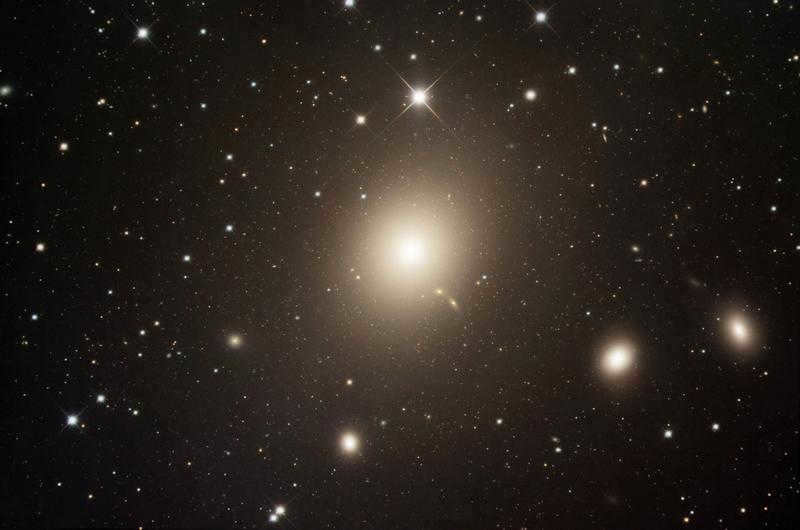
The constellation Virgo is home to the magnificent Galaxy M 87.
With a cross-section measuring 147,000 light-years, M 87 is similar in size to our own Milky Way. What sets it apart, however, is the presence of approximately 12,000 globular clusters, a number that dwarfs the mere couple hundred found in our galaxy. Another distinction lies in the fact that M 87 is an elliptical galaxy, housing stars that are significantly larger than those found in the Milky Way. The total mass of M 87 may exceed that of our galaxy by a factor of 200.
Scientists have discovered a supermassive black hole at the heart of the galaxy that is 3.5 billion times larger than the Sun. This incredible black hole is one of the largest known to the scientific community. It releases jets of matter that travel an astounding distance of 4900 light-years. Due to its intense radio emissions, it has been named Virgo A.
Located on the border of the Virgo and Veronica Hair constellations, the M 87 galaxy shines with a brightness of 9.59 m. Even with a modest 6 cm telescope, it is possible to observe this remarkable celestial object.
Galaxy M 104 – Sombrero
The Sombrero, a stunning galaxy that bears a striking resemblance to a traditional Mexican headdress, is likely familiar to you from photographs. However, it is more than meets the eye, as it is actually the result of the merger of two galaxies – an elliptical galaxy and a flat spiral galaxy. The spiral component is visible from nearly any angle, with an inclination of just 6 degrees.
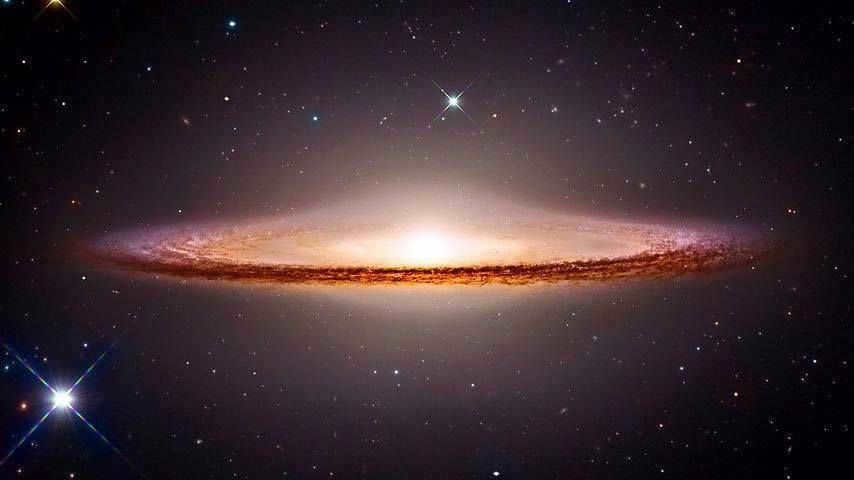
The Sombrero Galaxy, also known as M 104, is a remarkable celestial object.
It is situated at a distance of 29 light years from us, and it is about three times smaller than our Milky Way. What makes it even more fascinating is the fact that it harbors a black hole at its center, which has a mass equivalent to a billion solar masses. This black hole is one of the largest known in the universe, and it emits powerful X-rays, making the galaxy a significant source of such radiation.
Unlike many other galaxies, the Sombrero Galaxy is not part of the Virgo Cluster. Instead, it resides in the lower part of the constellation, near the border with Raven. Despite its location, the galaxy can be observed with a small amateur telescope, as its brightness reaches 8.3 m.
Galaxy M 49
This particular elliptical galaxy doesn’t really catch the eye, except for the fact that it happens to be the most radiant one within the Virgo Cluster. Situated between δ Virgo and β Leo, it appears as a slightly blurred spot. If you happen to be stargazing during the spring season on a moonless night, you might be able to locate this galaxy with a pair of regular field binoculars.
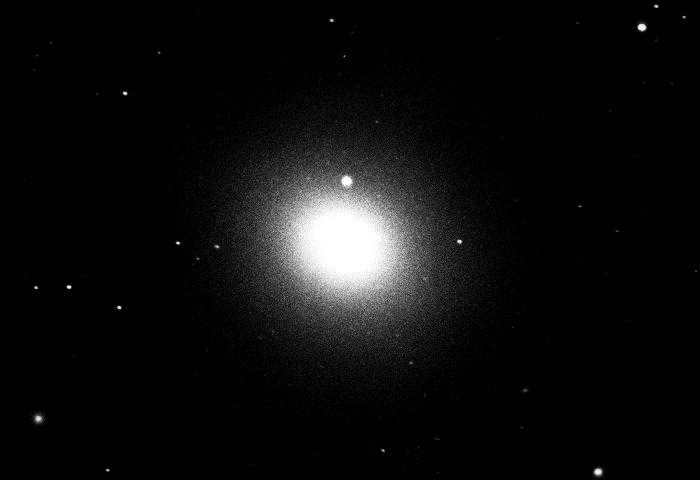
Typically, elliptical galaxies do not display striking visual characteristics, and M 49 is not an exception to this. Even when observed through a high-performance telescope with a large aperture, it still appears as a diffuse blur, with its brightness gradually intensifying towards the center. The stars that appear to surround M 49 are actually part of our own galaxy and are only projected to be in close proximity.
The M 60 galaxy: a unique celestial object
Situated at a staggering distance of 60 million light years away from Earth, the M 60 galaxy may not initially appear to be particularly remarkable, resembling a rather ordinary luminous sphere. Observing it through a telescope, one might perceive it as a nebulous patch with a magnitude of 8.8.
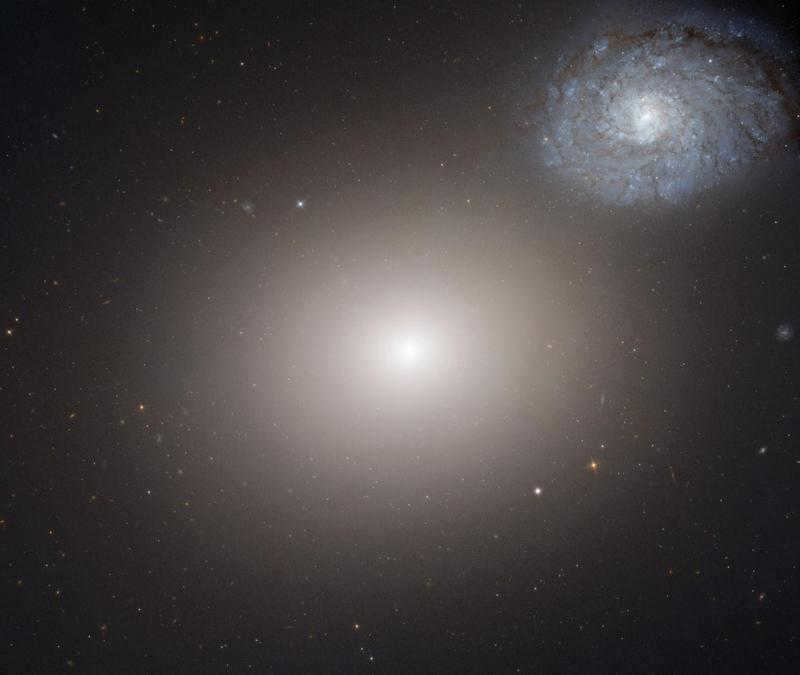
Galaxy M 60 and its counterpart, the spiral galaxy NGC 4647, are observed together.
However, there is a secondary galaxy accompanying Galaxy M 60 – the spiral galaxy NGC 4647, which appears to be flat. It is important to note that NGC 4647 is quite faint, with a brightness of approximately 11 m, and can only be observed by individuals with telescopes that have a minimum aperture of 200 mm. The combined presence of these two galaxies creates a unique visual display. It is currently understood that an interaction occurs between the two galaxies, resulting in the formation of a system.
Galaxy M 61
This stunning spiral galaxy is found in the Virgo constellation. It is situated in close proximity to M 49 and has an apparent magnitude of 9.3. To fully appreciate the magnificent spiral arms, a telescope with a minimum aperture of 200 mm is required. However, it is still possible to observe or capture images of this galaxy using a smaller telescope.
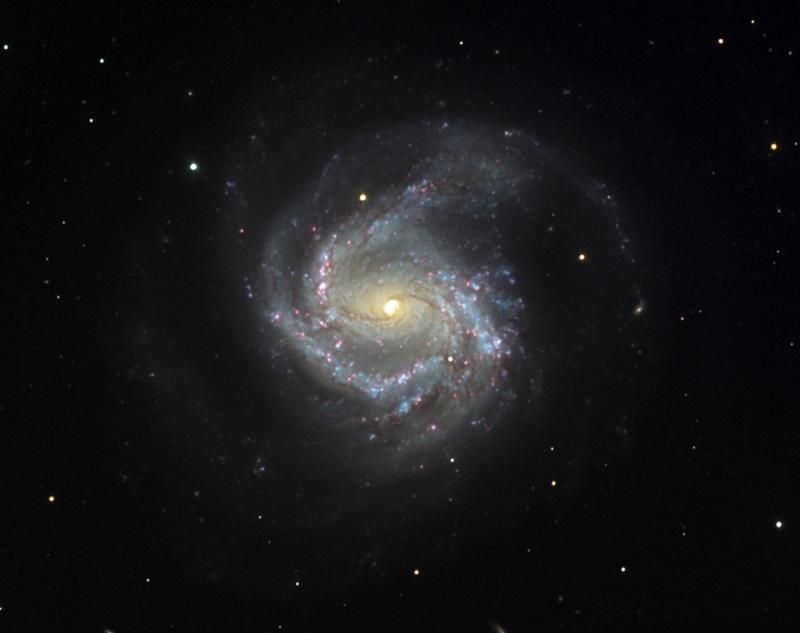
Galaxy M 58
This lovely spiral galaxy is often observed as a hazy oval shape in smaller telescopes. However, when using a telescope with an aperture of 150 mm or greater, you can begin to distinguish its central nucleus and surrounding halo. With a brightness of 9.6 m and a surface brightness of 13.1 m, it is a captivating sight to behold.
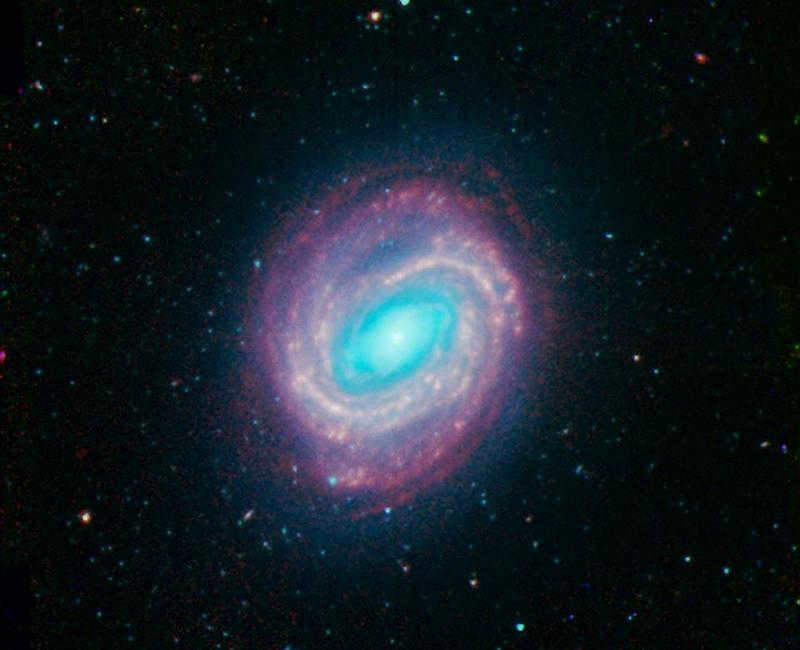
The different positions of the Virgo constellation throughout the year
The Virgo constellation is typically seen during the spring season, making it most visible during this time. By March, it starts to appear in the eastern part of the sky and continues to rise higher as time goes on. By April and May, Virgo can be observed at a high point in the southern sky during the early hours of the night, making it the ideal time to view it.
As summer approaches, the Virgo constellation gradually moves towards the west. Due to its lower position in the sky, it quickly retreats to the horizon at nightfall and eventually disappears by June. However, it can still be seen in July, albeit only in the evening.
The significance of the Virgo constellation in astrology
Virgo, the sixth zodiacal constellation, holds great importance in the field of astrology. It represents individuals who are born between August 23 and September 23.
This sign is associated with various plants, including poppies, asters, pansies, mother and stepmother, mint, chamomile, cereals, and medicinal herbs. The preferred stones for Virgo are cat’s eye, agate, jasper, and carnelian.
Astrologically, each zodiacal constellation bestows specific character traits upon those born under it. For Virgo, there is a further division into three parts based on the decade of birth.
Individuals born between August 24 and September 2 are influenced by the Sun. They are known for their stability, calmness, sense of duty, intelligence, and resilience.
Those born from September 3 through September 11 are influenced by Venus. They possess traits such as indecisiveness, shyness, secrecy, and pedantry.
Individuals born between September 12 and September 22 are influenced by the planet Mercury. As a result, they possess cunning and laziness, are pragmatic, and tend to form families later in life.
In astrology, the symbol of Virgo represents virtue, chastity, justice, and purity. Consequently, those born under this sign hold high standards for their partners, and not everyone is able to meet them.
Virgos do not rely solely on emotions in their daily lives. They meticulously analyze everything and value order in all aspects. They strive to make everything meaningful and beneficial. Virgos are cautious individuals who plan and organize ahead of time. They are resistant to changing their established lifestyles.
Virgo’s prudence is evident in their habit of stocking up and making deposits to prepare for any future difficulties. This cautious approach gives them a sense of security and confidence in what lies ahead. Additionally, Virgos are known for being meticulous hosts, ensuring that their living space is always organized and well-maintained.

Virgo is the largest constellation out of the twelve zodiacal constellations and the second largest constellation in the entire sky, coming after Hydra. For amateur astronomers, this constellation is particularly intriguing because it offers a multitude of interesting objects to observe.
The History of Research
Virgo is one of the oldest constellations known to us, with a history dating back 4500 years. Even in ancient times, various cultures had legends and stories associated with this constellation. The first depiction of Virgo can be found in the star atlas created by the Greek astronomer Hipparchus in the 2nd century BC. However, it was officially recognized and included in Claudius Ptolemy’s celestial catalog, “Almagest,” in the 2nd century AD.
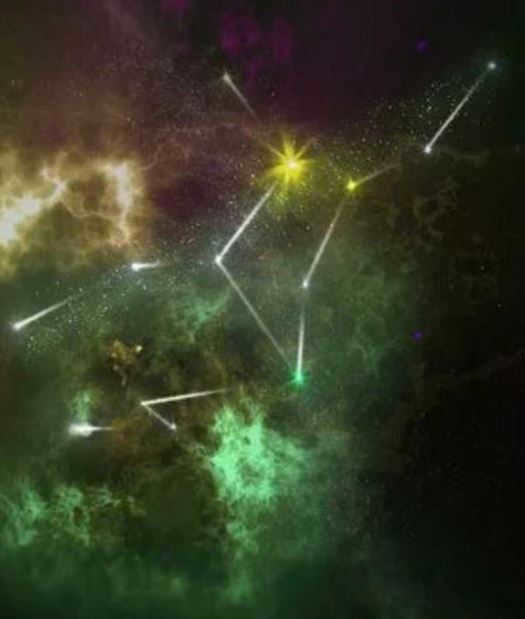
The configuration of the constellation remains unchanged to this day. Virgo is home to one of the largest collections of galaxies. According to the renowned French astronomer J. Vaucouleur, this cluster serves as the core of the Supergalaxy, where stellar systems take on the role of stars.
In Latin, Virgo translates to “virgin”. However, none of the goddesses associated with this constellation were virgins. Therefore, it is more likely that the name originated from Arab countries, where it meant “winemaker”. In this region, the constellation was linked to the harvest and the start of the winemaking season.
The ancient Greek legend of the goddess of fertility and agriculture, Demeter (known as Ceres in ancient Roman mythology), is the most well-known mythological representation of Virgo. According to the legend, Demeter looks down from heaven onto the sinful earth, holding a sheaf of ears in her hands. She intends to present this sheaf to humanity as a means of teaching them about farming. In both the ancient Greek and ancient Roman versions of the myth, the brightest star in the constellation, known as Spica (which means “spike” in Italian), symbolizes the “spike” or sheaf of ears.
Constellation’s Position
In terms of location, Virgo is situated along the celestial equator, positioned between the constellations of Leo and Libra. This constellation can be found in the third quadrant of the southern hemisphere (SQ3) and is visible in latitudes ranging from +80 to -80 degrees. Virgo shares its borders with neighboring constellations such as Coma Berenices, Corvus, Hydra, Crater, and Serpens Caput. In the southern hemisphere, Virgo is considered an autumnal constellation, located approximately 30 to 40 degrees north of Centaurus.
Description and stellar composition
The following text has been paraphrased while maintaining its unique nature.
Overview and composition of stars
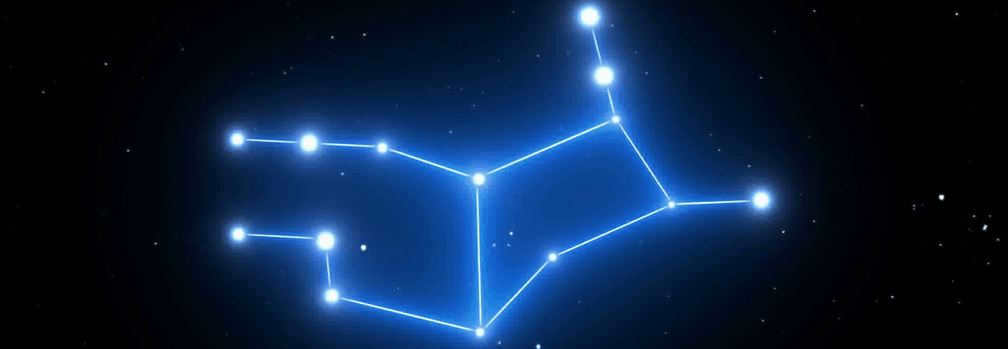
Virgo, the second largest constellation in the celestial sphere, covers a vast expanse of 1,294 square degrees, constituting approximately 3.14% of the entire night sky. This magnificent constellation boasts a total of 164 stars that can be observed without the aid of any optical instrument.
Among these stars, the most luminous one is Spica (α Virginis), which holds the impressive distinction of being the 15th brightest star in the entire nocturnal heavens.
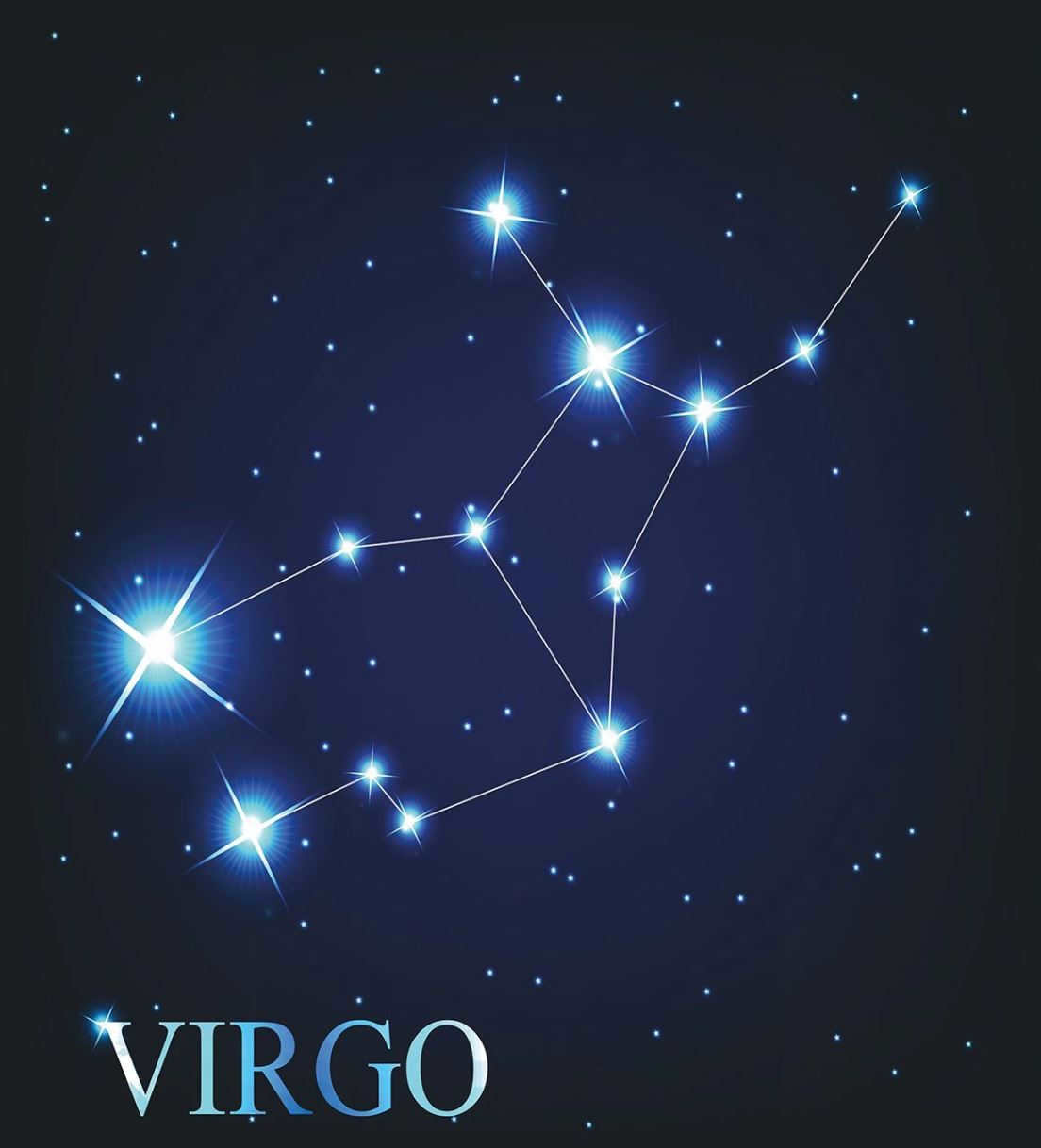
Spica can be found in the eastern part of a massive star cluster. It is actually a binary star, meaning it consists of two celestial bodies that orbit each other in elliptical paths.
One of these bodies is a blue giant, while the other is a variable star of the Beta Cepheus type. The surface of the variable star pulsates, causing fluctuations in its brightness. Both of these stars belong to the Main Sequence category.
Spica, the brightest member of this constellation, is located approximately 260 light-years away from Earth. It played a significant role in the discoveries made by ancient astronomer Hipparchus, who observed the precession of the equinoxes. The star also caught the attention of Nicholas Copernicus, who spent a considerable amount of time studying it.
The blue giant has a mass that is 10 times greater than the Sun and a radius that is 7 times larger. Its luminosity is also 12 thousand times higher than that of the Sun. The variable star, on the other hand, has a mass that is 7 times greater than the Sun and a radius that is 3.6 times larger.
This star is located at a distance of 32 light years and is a double star. Both stars belong to the Main Sequence and have a mass that is 2 times greater than the Sun. Porrima is situated so close to the ecliptic that it is occasionally blocked by the Moon. In rare cases, it can also be occluded by planets in our solar system.
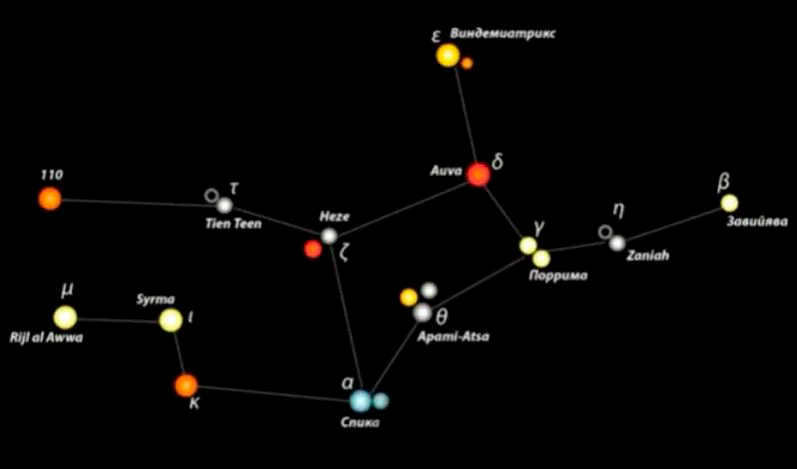
Nowadays, the Virgo spectrum is only visible through large optical devices, although it used to be observable through amateur telescopes until 1990. However, due to the close proximity of the two components of Porrima, it is no longer easily visible. The two components of this binary system are essentially identical twins. They fall into the category of yellow-white stars of spectral class F0 V.
The surface temperature of the Porrima stars significantly surpasses that of the Sun, reaching 7000 K. The distance between the constituents of this system is approximately 40 astronomical units. The stars have a rotation period of 170 years, making it challenging for observers to detect changes in their mutual arrangement.
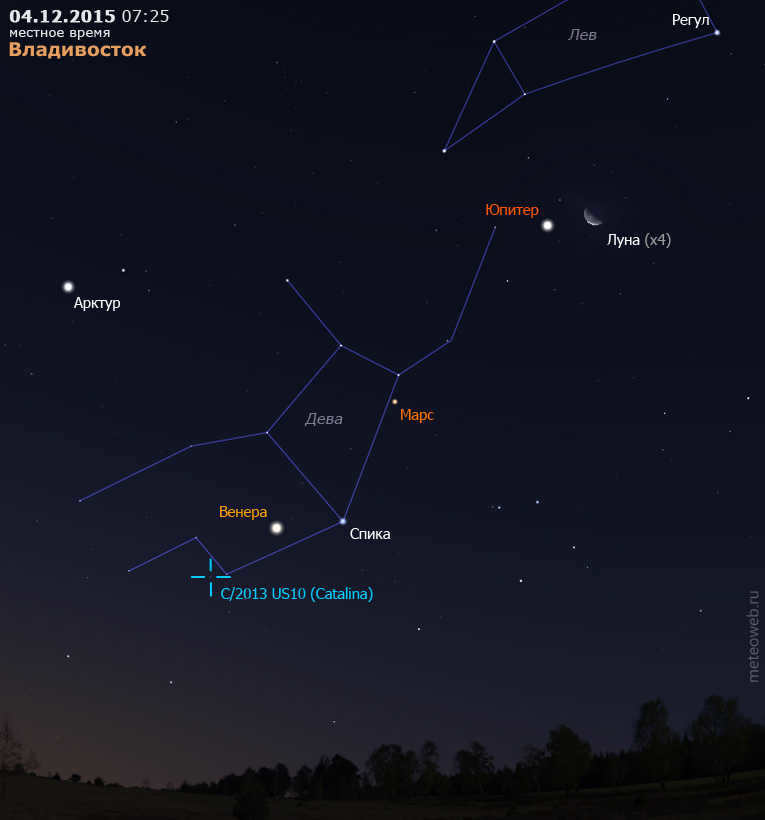
It is a binary star located 31 parsecs (101.2 light years) away from the Sun. The star’s name is derived from the Latin translation of the Greek word Vindemitor, which translates to “grape picker”. Epsilon Virgo is a relatively cool yellow giant star that has depleted its hydrogen reserves.
Vindemitorix emits powerful X-ray waves, with a total energy exceeding that of the Sun by approximately 300 times. This indicates that the star exhibits significant electromagnetic activity.
The dimmer stars in the Virgo constellation:
- Heze (ζ Virginis) – A type A3 V star, known for its white color and location in the ζ Virginis constellation. It is approximately 73.13 light years away from Earth. The star has a high temperature of 8,700K and a rapid rotation speed of 222km/s, completing a full revolution in less than one day. With an estimated age of 510,000,000 years, Heze is considered relatively young. It has a mass 2 times larger than the Sun, a radius 2 times larger, and is 17.8 times brighter in luminosity. Recent data shows that Heze has a companion, a red dwarf of spectral class M4V – M7V.
- Auva (δ Virginis) is a red giant star classified as M3 III. It is situated approximately 202.2 light-years away. The outer atmosphere of this star has expanded to 48 times the size of the Sun. In terms of mass, it is 1.4 times larger than the Sun, while its radius is 48 times greater, and its luminosity is 468 times brighter. The temperature of Auva is estimated to be around 3,100 K. It is possible that there is a K-type star accompanying Auva.
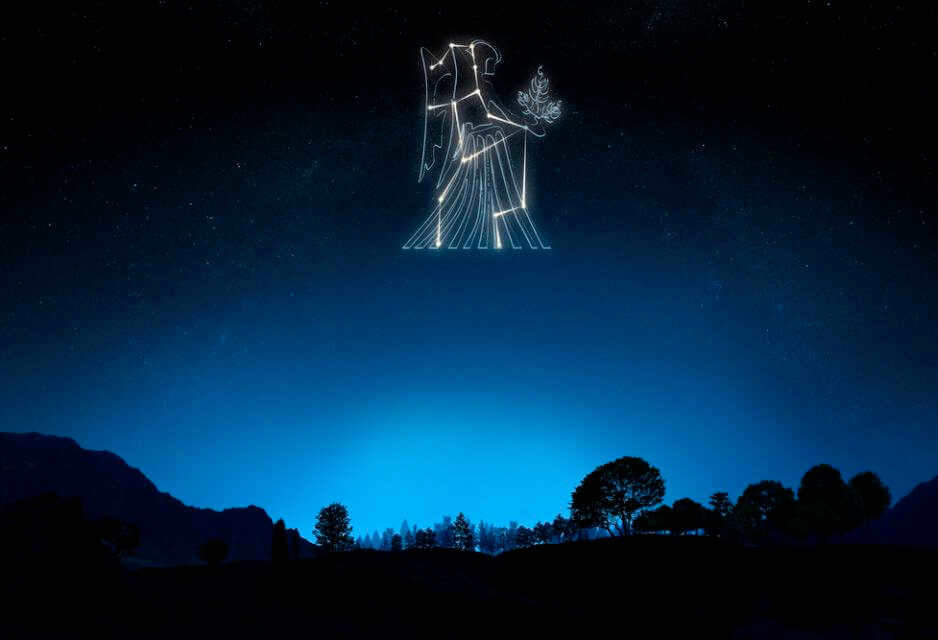
- Rijl al Awwa – (μ Virginis) is an F2III white-yellow giant star situated approximately 60.85 light-years away from Earth. This star has a mass 1.55 times larger than the Sun, a radius 2.1 times larger than the Sun, and a luminosity 7.5 times brighter than the Sun. It has a temperature of 6715K and a rotation speed of 2 km/s. The estimated age of this star is between 1300 and 1500 million years.
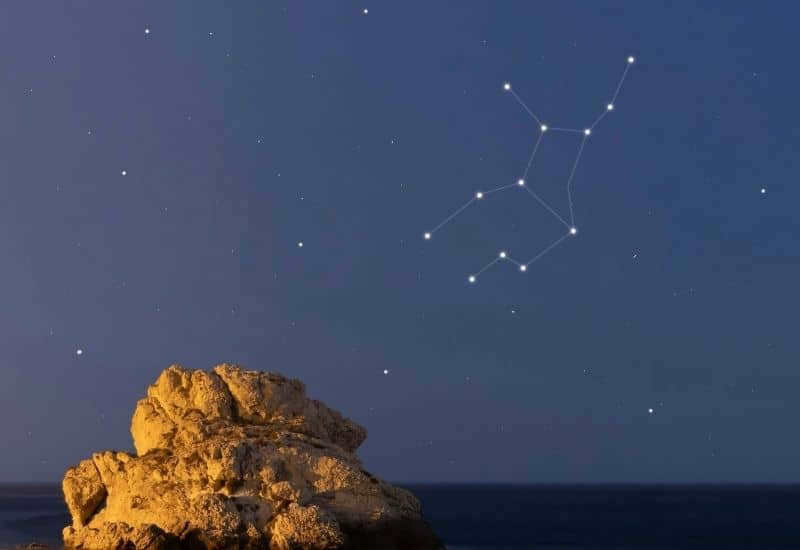
- Tien Teen – (τ Vir / 93 Virginis) – is a type A3V main sequence star. It has a mass 2.5 times greater than the Sun, a radius 4.2 times larger, and is 73 times brighter in luminosity. It is situated at a distance of 218.1 sv years. The star’s temperature is 8,700 K and its rotational speed is 168 km/s. Its age is 310,000,000 years.

- Zaniah – (η Virginis) – a main sequence star of type A2 V. It is situated approximately 249.4 light years away from Earth. This star has a mass 2.5 times that of the Sun and a temperature of 9,100K. Additionally, it has a companion star with a mass 1.89 times that of the Sun.
- Syrma – (ι Virginis) – a yellow giant star of type F6 III. It is located around 69.7 light years away from Earth. This star is 1.5 times more massive, 3.4 times larger in radius, and 9.1 times brighter than the Sun. Its temperature is 6,400 K.
- Zaviyava – (β Virginis). – Zaviyava is a white-yellow dwarf classified as an F9V F9 V star. It is situated at a distance of 35.51 light-years from Earth. The temperature of Zaviyava is measured to be 6200 K. This star has a mass 1.4 times greater than the Sun, a radius 1.7 times larger, and a luminosity 3.51 times that of our Sun. Its rotational velocity is estimated to be approximately 3 km/s.
- Kappa – (κ Virginis). – Kappa is an orange giant with a spectral type of K2.5IIIFe-0.5. It is located approximately 223.3 light-years away from Earth. The temperature of Kappa is recorded as 4300K.
Fascinating celestial bodies in the constellation
Alongside a myriad of incredibly varied stars, this astrological constellation also boasts a wealth of unique objects within its makeup.
Quasar 3C 273
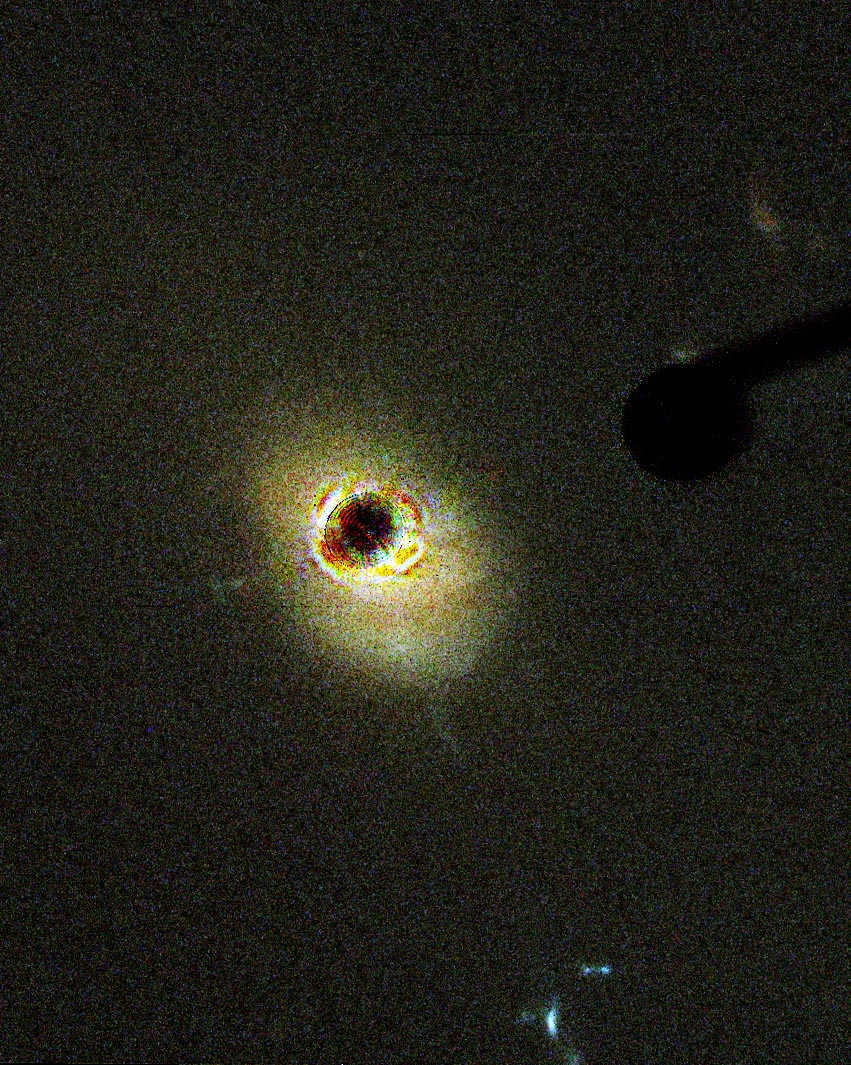
This quasar is the most luminous one found in the constellation of Virgo. It has a twelfth apparent stellar magnitude and is located a staggering two billion light-years away from Earth. Scientists first identified this quasar in 1963, and its exploration has been ongoing ever since.
Interestingly, researchers actually spotted this object back in 1959, but at that time it was thought to be a significant radio source. Today, it is recognized as a radio-loud quasar and one of the earliest extragalactic objects to be discovered.
A colossal collection of galaxies
Situated in the top-right region of the constellation lies the epicenter of an immense assemblage of galaxies known as the Virgo Cluster. This astronomical marvel is composed of over 2,000 galaxies, each housing countless billions and trillions of stars.
The Virgo Cluster is home to numerous galaxies that can only be observed using high-powered telescopes, yet there are also many that can be seen using amateur instruments. All of these galaxies are documented in the Messier catalog.
M 104 Sombrero.
The Sombrero galaxy gets its name from its resemblance to a traditional Mexican headdress. It is a unique celestial object, consisting of a combination of two galaxies – an elliptical galaxy and a flat spiral galaxy that have undergone a merging process. The spiral component of the galaxy is easily observable, even from its outer edges, as it has a low angle of inclination of only 6 degrees.
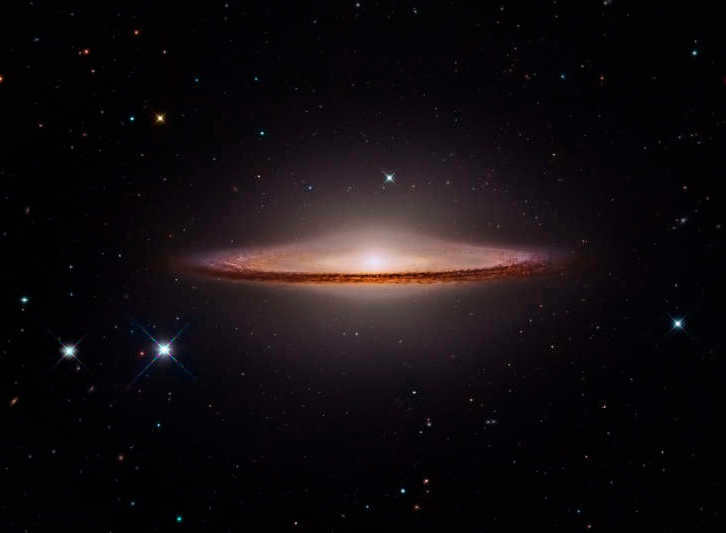
M104: Sombrero galaxy.
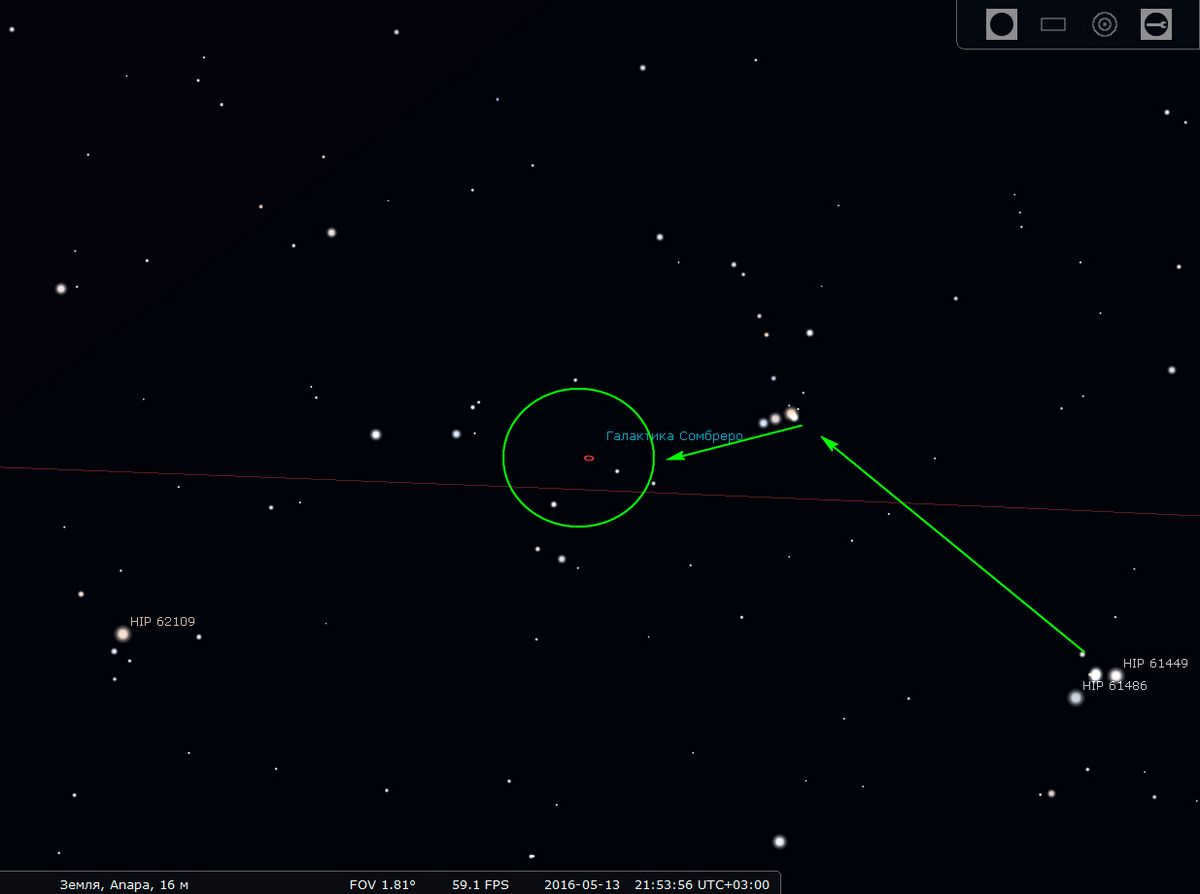
SKP2001EQ5 telescope and Canon 1000d were used to capture this image of the M104 galaxy.
M 104 is situated approximately 29 light years away and is three times smaller than our own Milky Way galaxy. At the heart of M 104 lies a black hole with a mass equivalent to one billion suns, making it one of the largest black holes known. As a result, the galaxy emits a significant amount of X-ray radiation.
The M 104 galaxy is located outside of the Virgo Cluster, towards the lower part of the constellation and bordering with the constellation of Corvus. It can be observed using a small amateur telescope, with a brightness rating of 8.3 m.
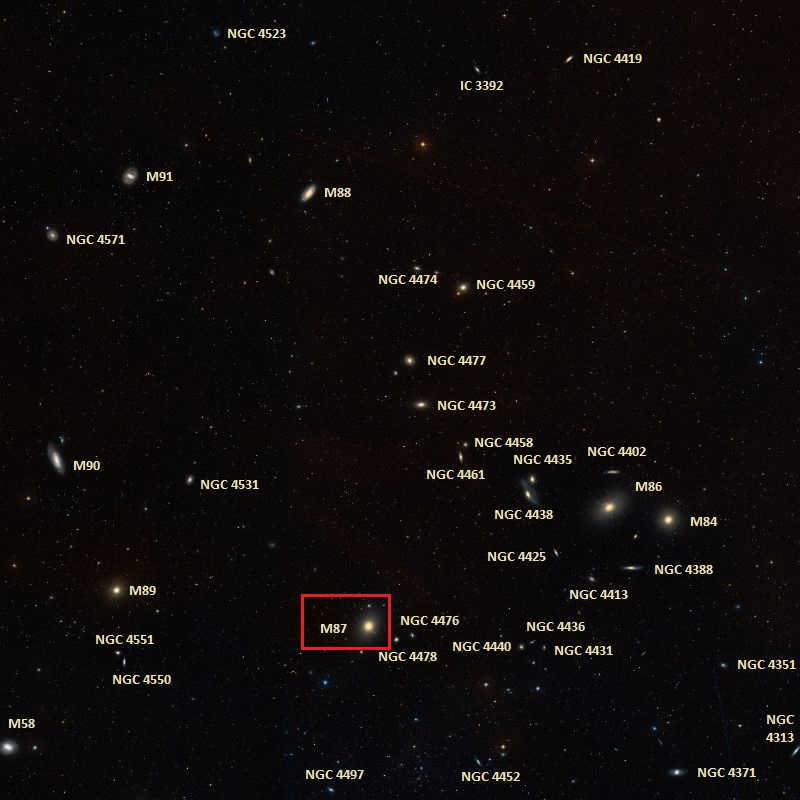
The Virgo Cluster contains many galaxies, but M 87 stands out as the second brightest and one of the most massive. Unlike spiral galaxies with their pronounced arms, M 87 is elliptical in shape, resembling a ball.
M 87 is located 53.5 million light-years away, and it spans 147,000 light-years, making it comparable in size to our own galaxy. Inside M 87, there are approximately 12,000 globular clusters, a much larger number than what can be found in the Milky Way.
At the heart of M 87 lies a supermassive black hole that weighs an astounding 3.5 billion times more than our Sun. This black hole is one of the largest known to scientists.
The black hole in M 87 expels matter in the form of jets that extend for 4,900 light-years. These jets emit powerful radio waves, which is why M 87 is also known as Virgo A in the radio astronomy community.
Galaxy M 87 is positioned at the junction of the Virgo and Coma Berenices constellations and possesses a luminosity of 9.59 m. It is visible even through a small 6 cm telescope, making it an excellent target for observation.
M 49
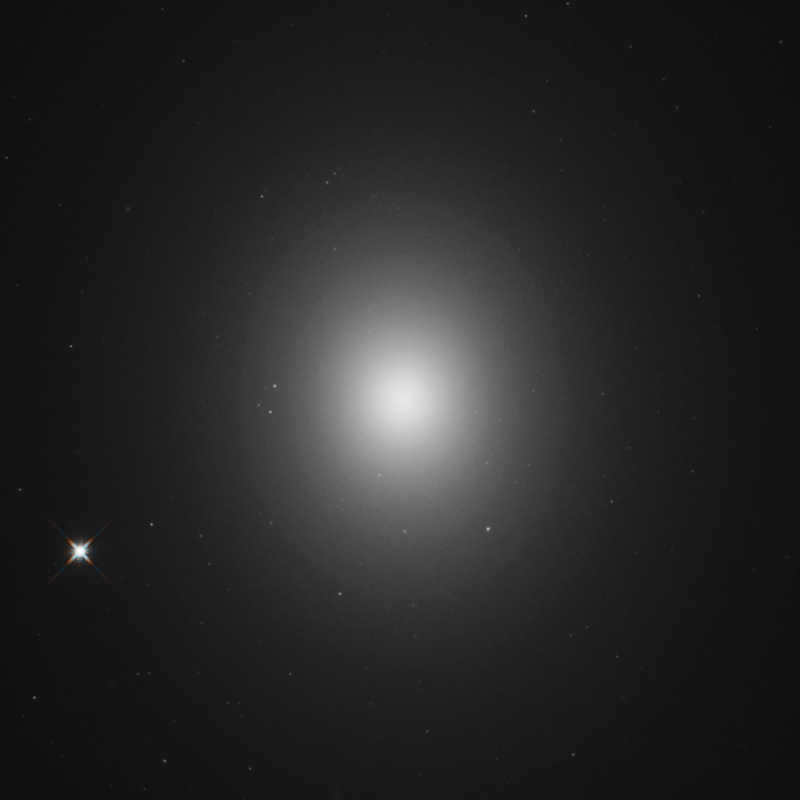
The brightest galaxy in the Virgo Cluster is this elliptical galaxy, which doesn’t have any remarkable features. It can be located between δ Virgo and β Leo. M 49 appears as a hazy spot. Even with regular field binoculars, you can spot this galaxy in the spring night sky.
Male 61
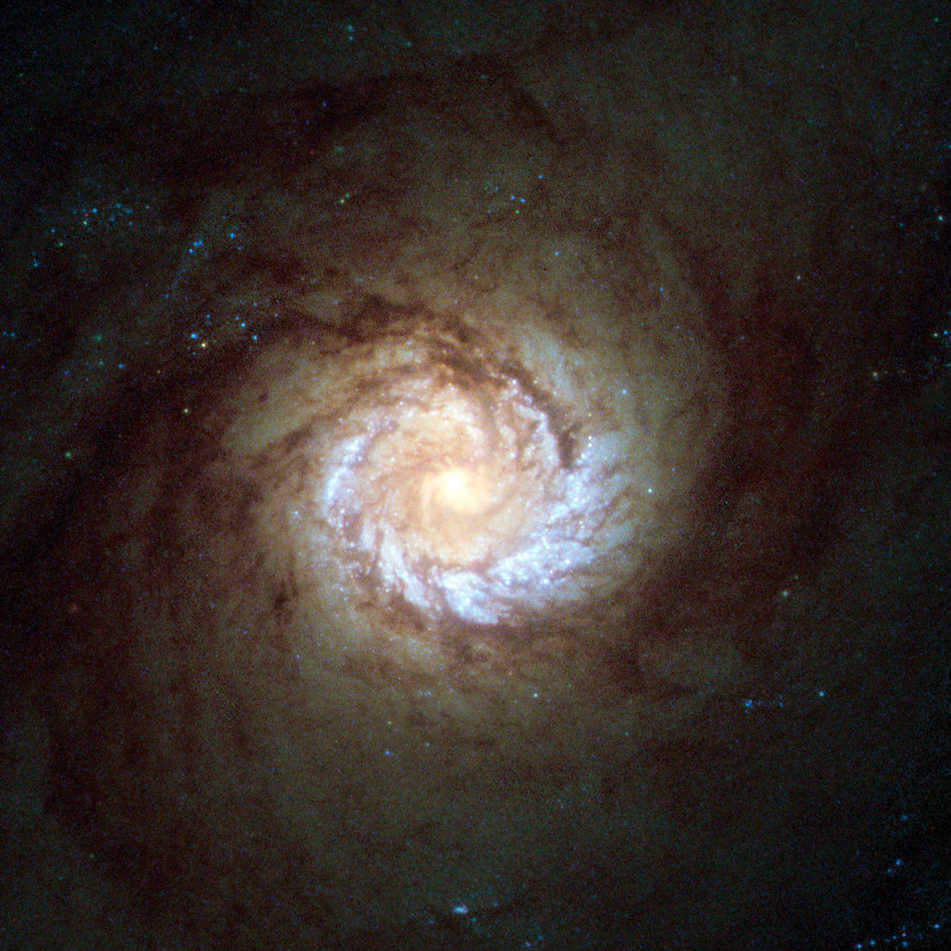
Located in the constellation Virgo, there is a truly remarkable spiral galaxy. It resides not too far from M 49 and possesses a brightness of 9.3 m. To behold the intricate spirals of its arms, one must gaze upon this galaxy through a telescope with an aperture of at least 200 mm. However, it is still possible to spot or capture it in a smaller telescope.
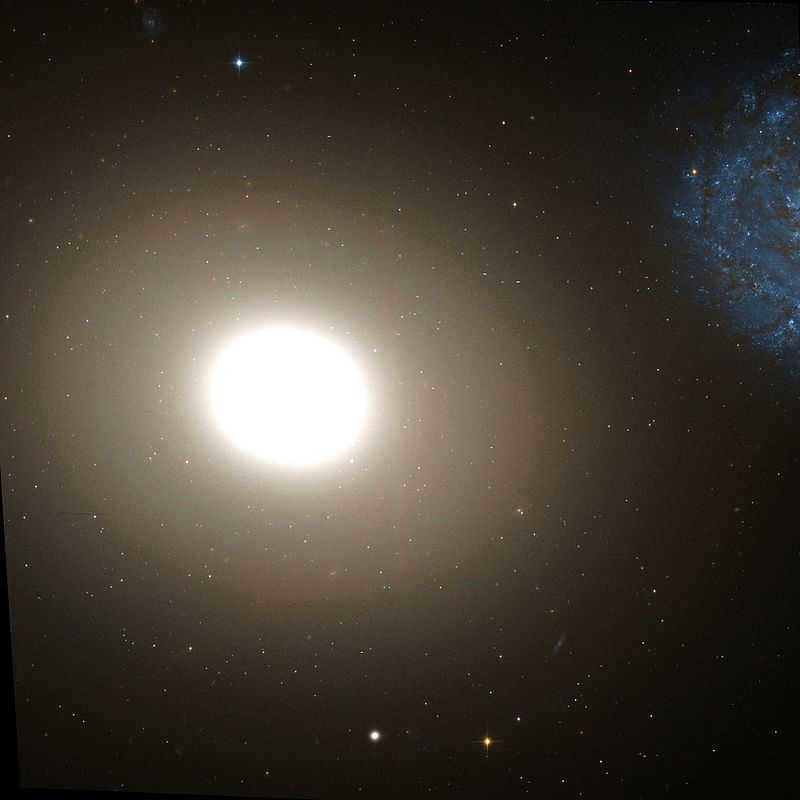
M 60
M 60 is an elliptical galaxy situated 60 million light years away from our location. It may not appear very remarkable, resembling a typical luminous sphere. When observed through a telescope, it appears as a hazy spot with a brightness rating of 8.8 m.
However, M 60 has a companion known as the spiral galaxy NGC 4647, which can be observed as a flat entity. It is quite faint, with a brightness rating of approximately 11 m, and can only be seen by owners of telescopes with an aperture of at least 200 mm. Together, these two galaxies create a rather unique sight.
It is now understood that there is an interaction occurring between this pair of galaxies, indicating that they are indeed forming a system.
M 90
can be paraphrased as
M 90
is another way to express the term M 90.
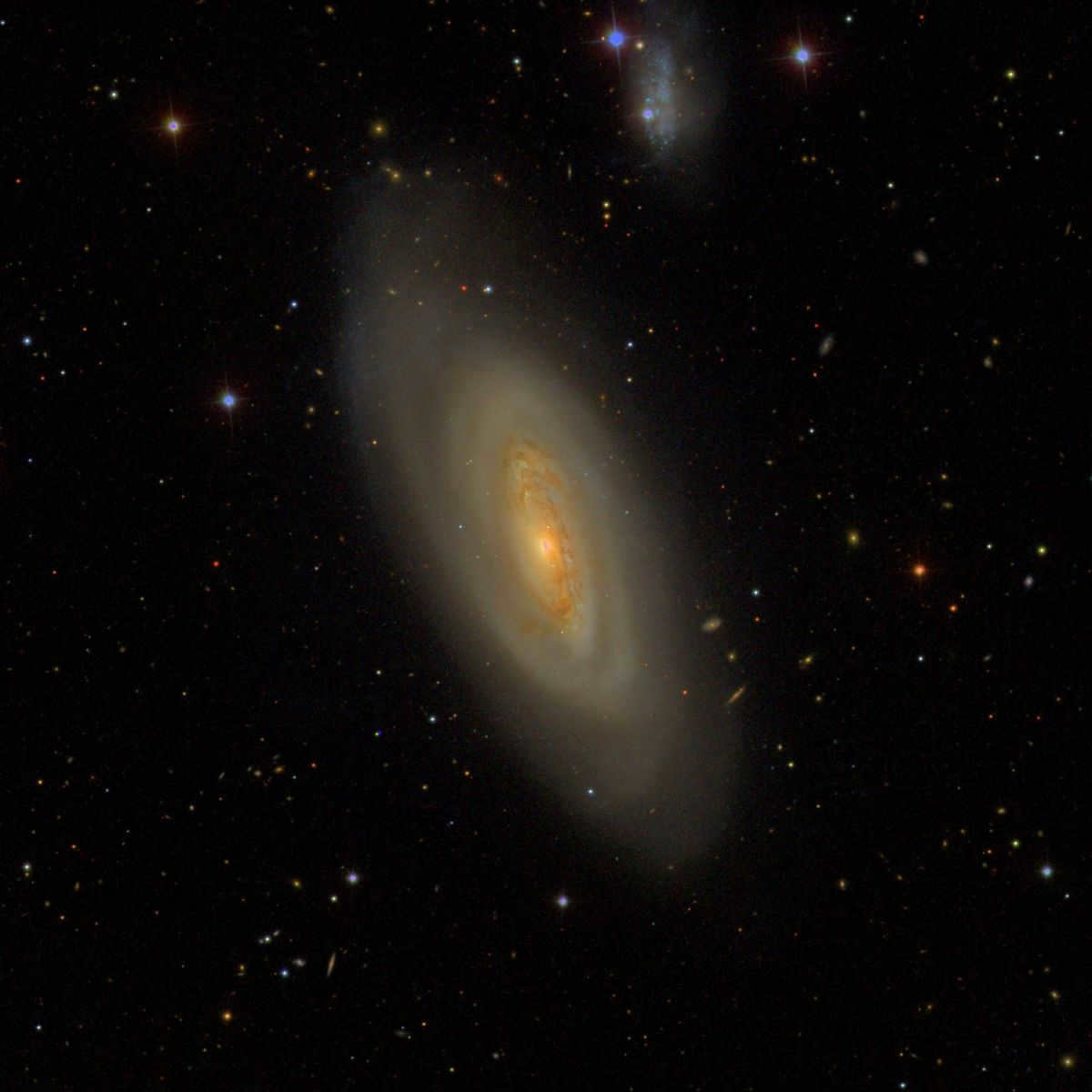
SBab type spiral galaxy. The first person to discover it was Charles Messier on March 18, 1781. The galaxy has a photographic stellar magnitude of mB 10.2. It is situated at a distance of 58.7 million light-years away from Earth. This galaxy is known to have approximately 1,000 globular clusters. Additionally, it possesses a blue color offset, indicating that it is moving towards our direction.
M 58
is a modified version of the original text in English, while preserving the HTML markup.
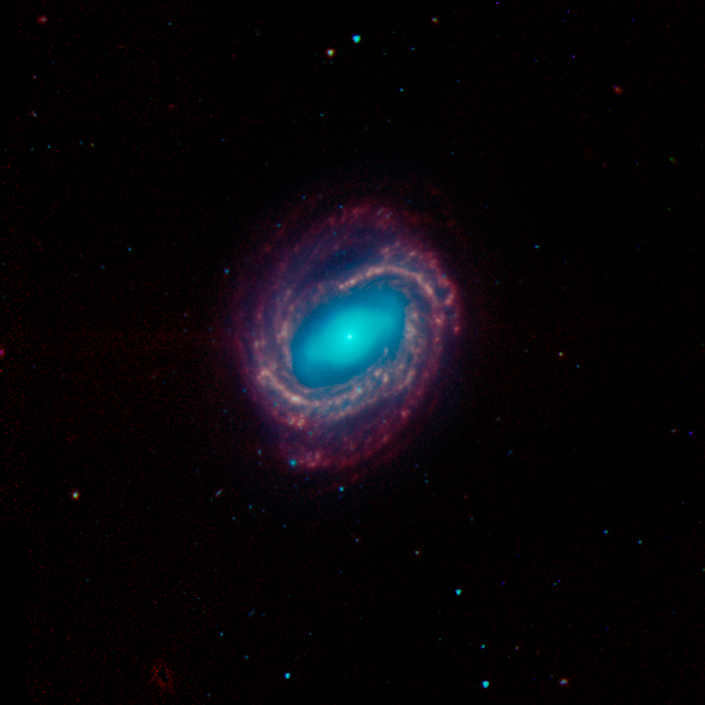
Furthermore, there exists a stunning spiral galaxy that, when observed through a small telescope, appears as a hazy oval shape. However, when using a telescope with an aperture of 150 mm or greater, one can discern both the nucleus and halo of this galaxy. It possesses a magnitude of 9.6 and a surface brightness of 13.1.
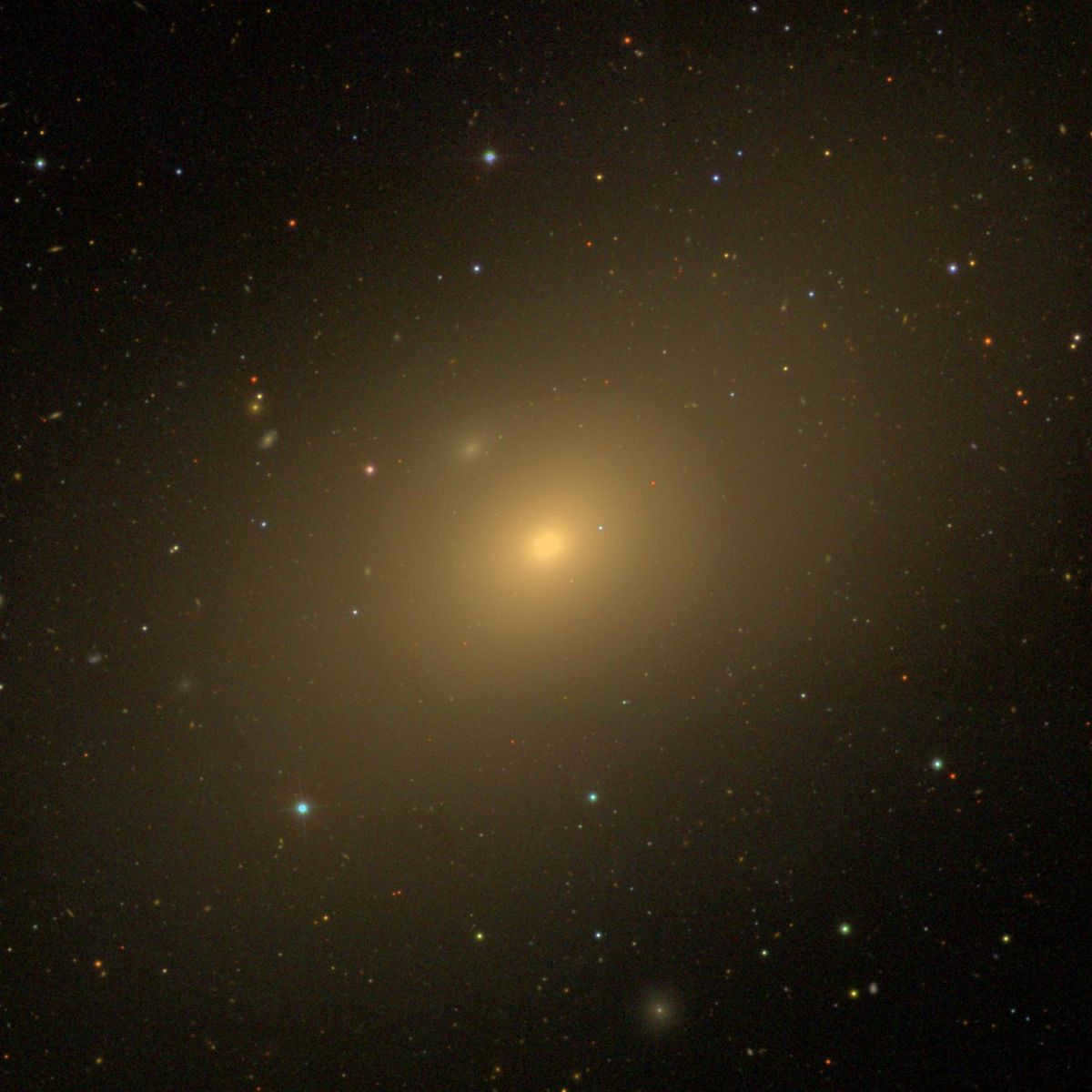
The initial observer of this celestial body was Charles Messier on March 18, 1781. The stellar magnitude in terms of photography is mB 9.9. The redshift of this galaxy is recorded as -0.000901 ± 0.000187. Remarkably, this galaxy is located an astonishing distance of 52.31 million light years away from us. It is interesting to note that this galaxy is exhibiting a dominant blueshift, indicating that it is moving towards our own Milky Way galaxy at a staggering speed of 244 km/s. Moreover, this galaxy is currently engaged in an interaction with another spiral galaxy known as NGC 4388. In terms of its cross-section size, it measures an impressive 135,600 light years.
M 89
can be rephrased as
89 M
while preserving the HTML markup.
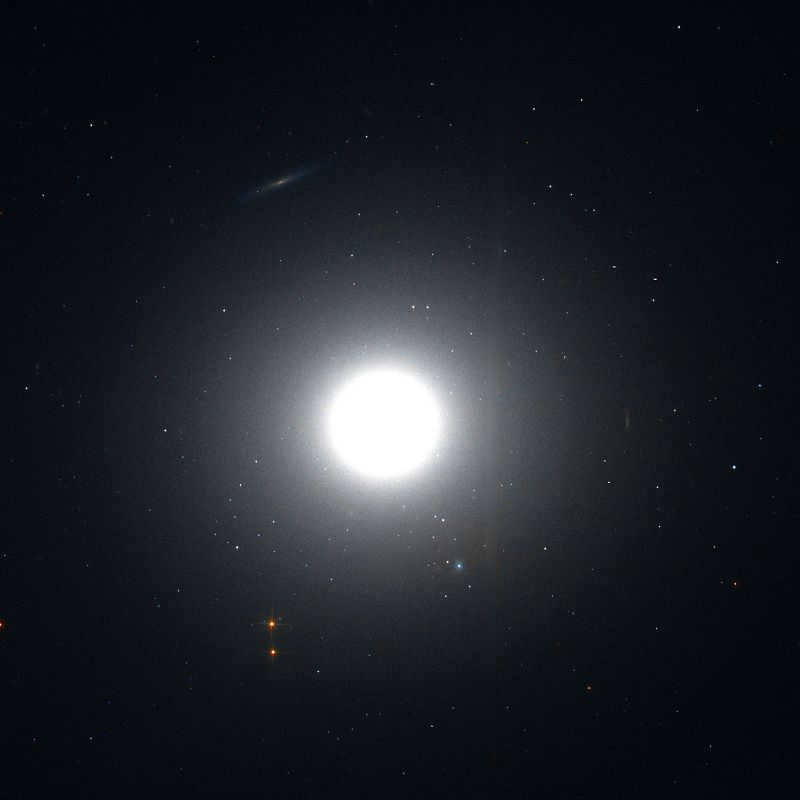
The Virgo constellation is home to an interesting astronomical object known as an elliptical galaxy. This particular galaxy is of type E0 and was first discovered by Charles Messier on March 18, 1781. What makes this galaxy unique is its spherical shape, which is not commonly found in elliptical galaxies. Located at a distance of 60 million light years, this galaxy is quite fascinating. It is estimated to contain around 2,000 globular clusters and has a photographic stellar magnitude of mB 10.9. The galaxy’s redshift is measured to be +0.000914 ± 0.000267.
NGC 4216.
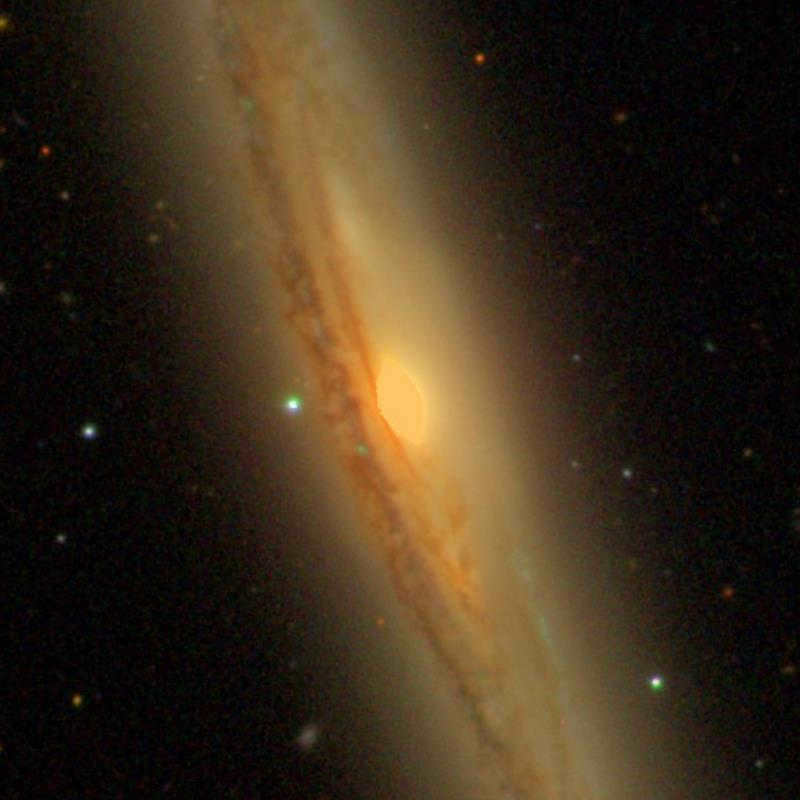
A spiral junction galaxy with the classification of SBb was first discovered by William Herschel on April 17, 1784. It is situated approximately 40 million light-years away from Earth. This galaxy exhibits a shortage of neutral hydrogen. Interestingly, it contains a plethora of globular clusters, five times more than what can be found in our own galaxy. The photographic stellar magnitude of this galaxy is measured to be mB 11.1.
M 84
can be paraphrased as “The M 84 is a military tank used by various countries.”
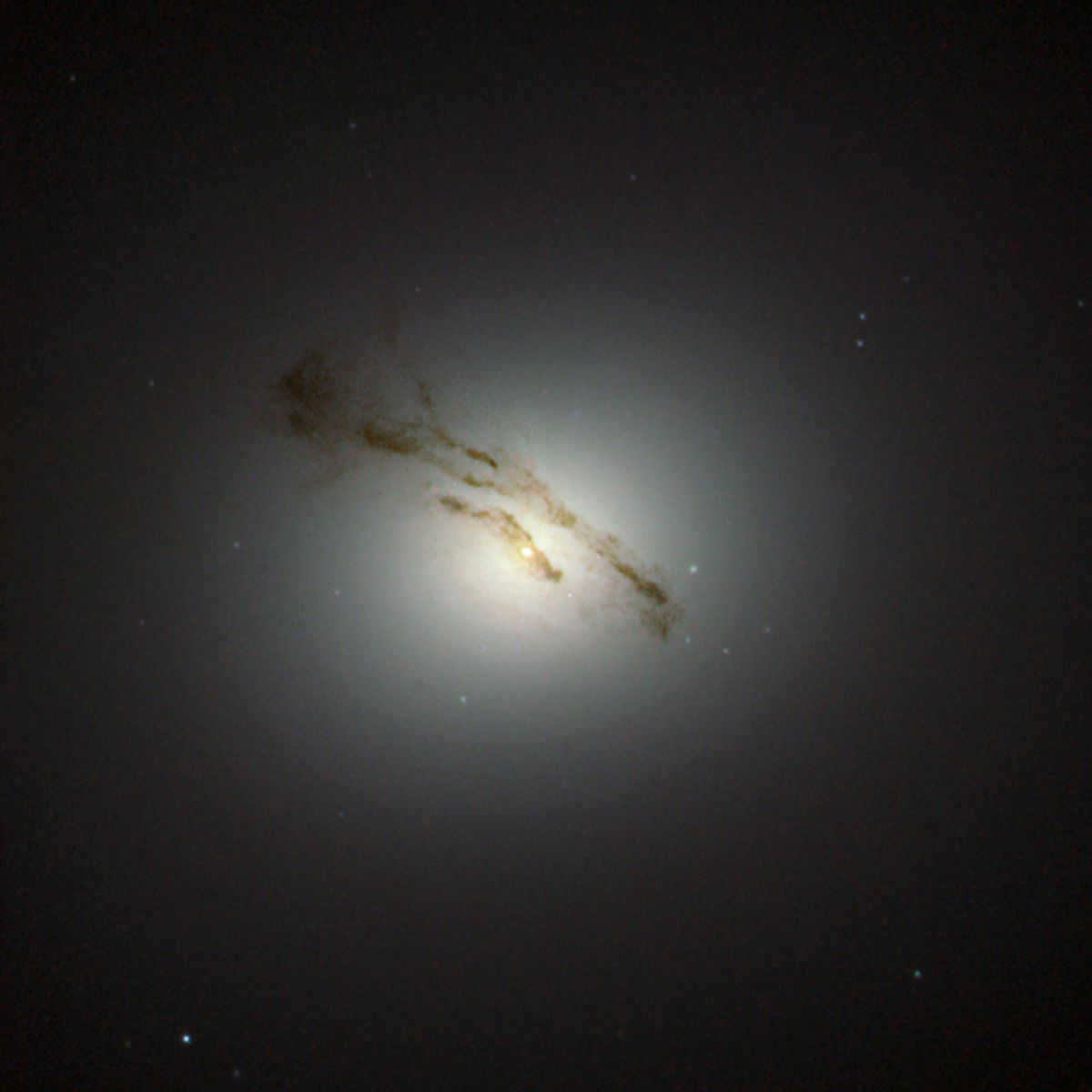
E1 is a lenticular galaxy that was first discovered by Charles Messier on March 18, 1781. The Hubble telescope has observed two jets of matter emanating from the galaxy’s center. Located approximately 56.96 million light-years away from Earth, E1 is home to over 1800 globular clusters. The galaxy measures 107,800 light-years in diameter.
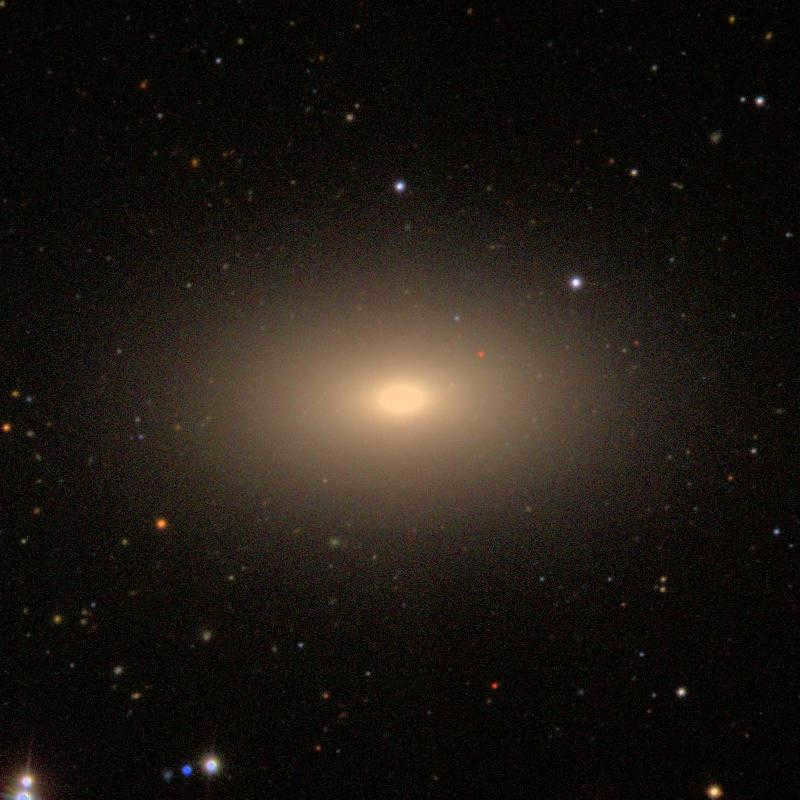
An E5 type elliptical galaxy was first discovered by William Herschel on 08.04.1784. It has a photographic stellar magnitude of mB 11.2 and a redshift of +0.007505 ± 0.000060. This galaxy, known as RXJ 1242-11, is located approximately 49 million light-years away from Earth.
RXJ 1242-11
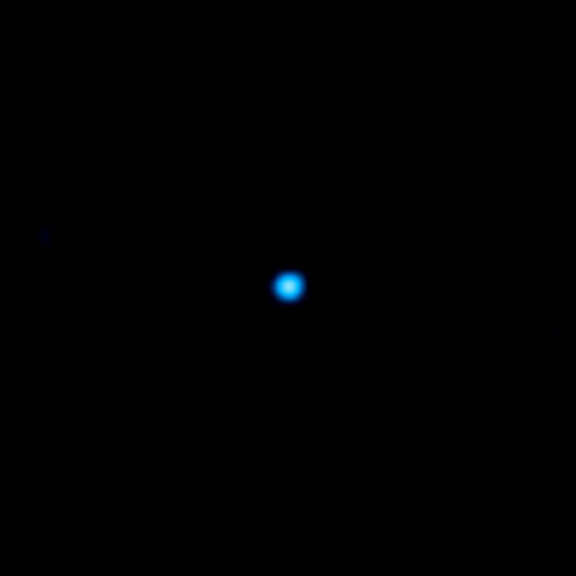
The Virgo zodiacal constellation is home to an elliptical galaxy that is situated approximately 650 million light-years away from Earth. This galaxy contains a supermassive black hole at its core, which has a mass equivalent to 100 million times that of our Sun.
NGC 4997
can be rephrased as
NGC 4997: A Unique Celestial Object
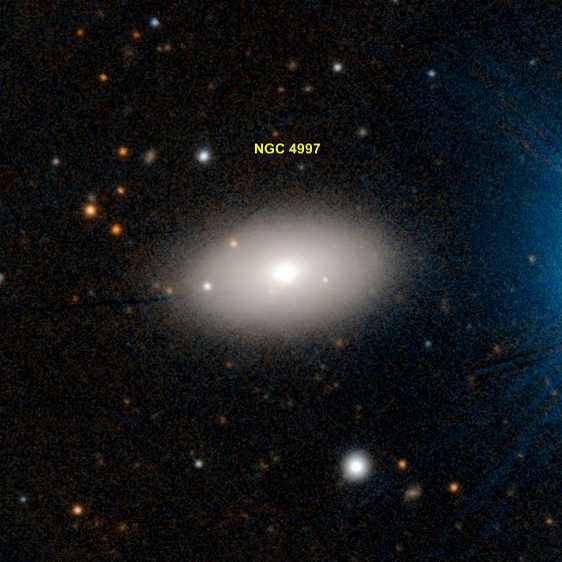
The Virgo constellation is home to a lenticular galaxy of the E-S0 type. It was first discovered by Sherburne Wesley Burnham in 1877. The galaxy has a photographic stellar magnitude of mB 13.9 and a redshift of +0.007929 ± 0.000003.
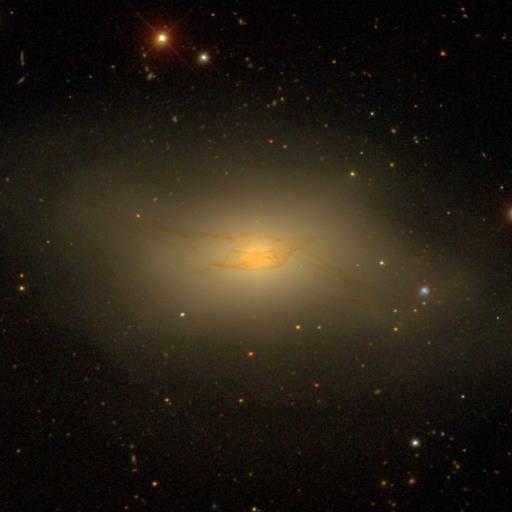
An S0 type lenticular galaxy was first discovered on February 22, 1784 by William Herschel. It has a photographic stellar magnitude of mB 10.9 and a redshift of +0.004213 ± 0.000337.
NGC 4261.
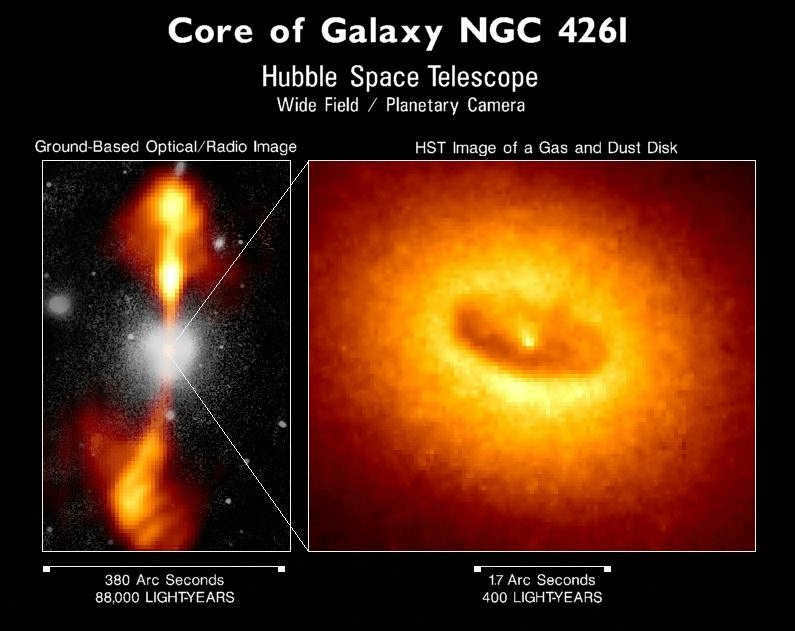
An elliptical galaxy of type E2 was discovered by William Herschel on April 13, 1784. Its photographic stellar magnitude is mB 11.4. The galaxy has a redshift of +0.007292 ± 0.000200 and is located approximately 115 million light-years away from Earth. At the center of this galaxy resides a supermassive black hole with a mass of roughly 500 million times that of the Sun.
NGC 4309
can be rephrased as “The astronomical object NGC 4309” or “NGC 4309, an object in space.”
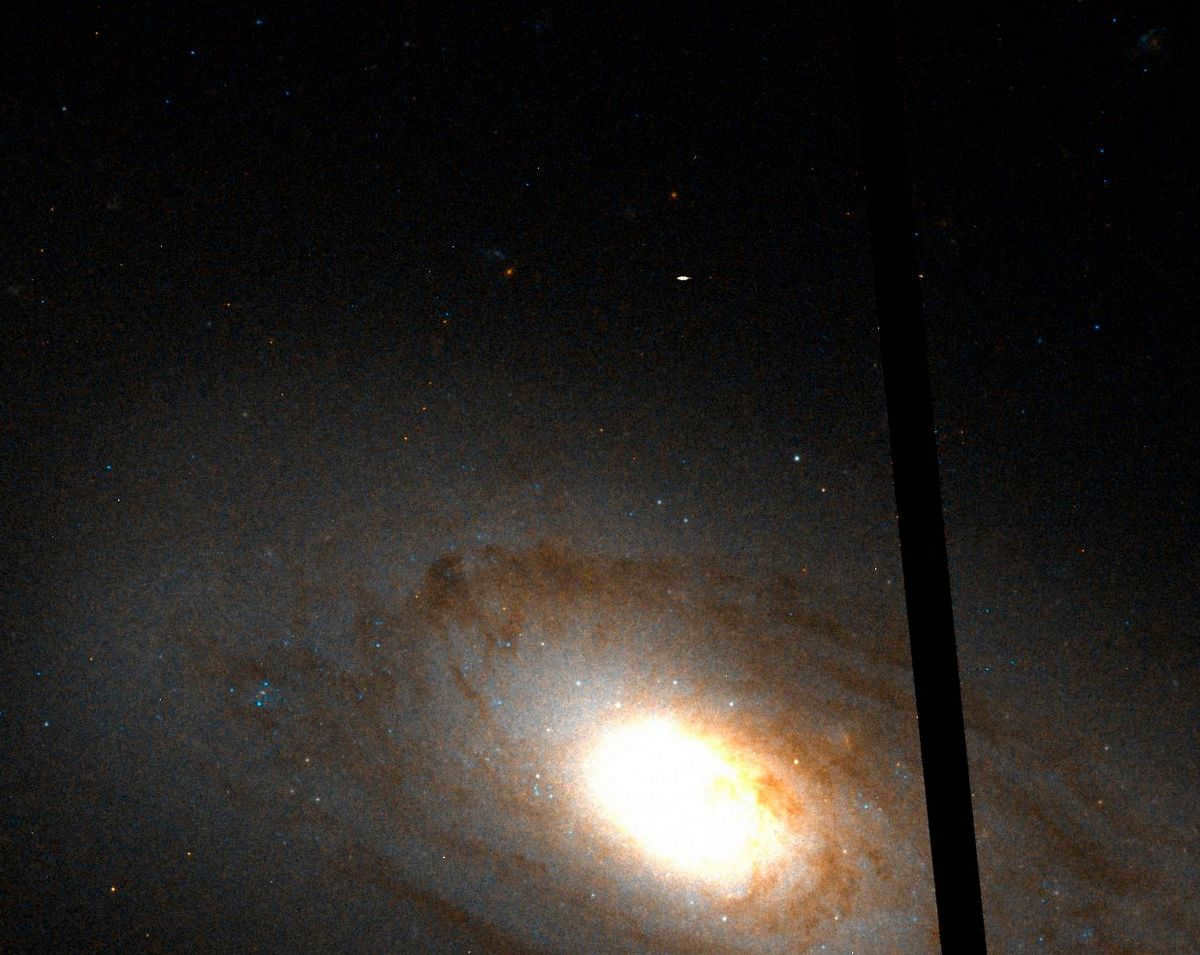
The Virgo constellation is home to a lenticular galaxy known as SB0-a. It was first discovered by Christian Heinrich Friedrich Peters in 1883. The galaxy has a photographic stellar magnitude of mB 13.7.
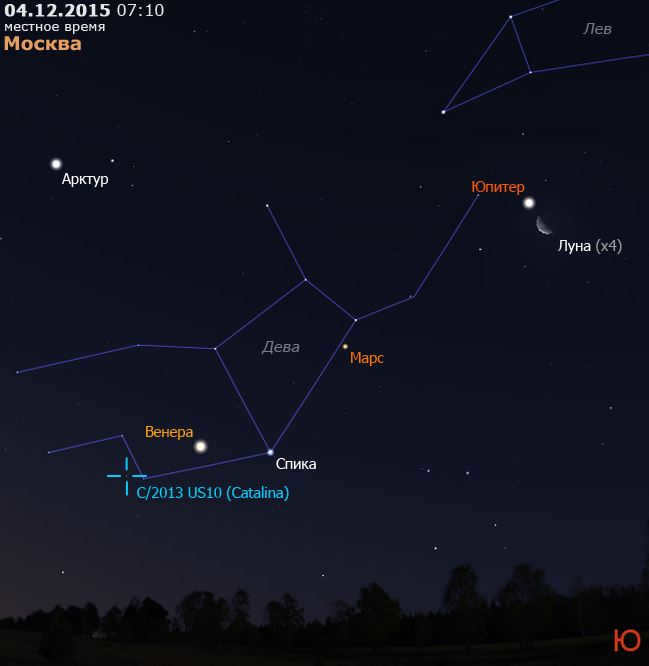
In ancient star charts, the constellation was depicted as a female figure holding an ear of wheat in her right hand. However, not everyone can easily identify this shape within a chaotic grouping of stars. Nevertheless, spotting Virgo is not difficult, as it features a bright first magnitude star that shines brilliantly in the night sky.
To locate the constellation in the Northern Hemisphere, one must first locate the Big Dipper and its handle. From the handle, draw a straight line downwards. Along this line, you will first encounter the orange star Arcturus from the constellation Boötes, and then you will come across the white-blue star Spica.
Another way to find Virgo is by using the constellation Leo. If you extend a line from Algenubi (ε of Leo) through Aljebu (γ of Leo) and onward to the star Tse Tseang (ι of Leo), it will lead you directly to Spica.
Virgo is most easily seen in early spring, specifically during the months of March and April. During this time, the constellation can be observed in the southern part of the horizon. The Sun passes through Virgo from September 16 to October 30, highlighting its significant size.
Queries regarding the constellation
The visibility of the region ranges from latitude +68 to -75 degrees, allowing for observation of the constellation from any location.
Virgo is situated at high galactic latitudes, meaning it is located far from the plane of the Galaxy where the majority of gas-dust matter is found. This positioning allows for minimal absorption of radiation from distant stars and galaxies. Additionally, Virgo is the second largest constellation among all existing constellations.
Scientific Facts Video Review
The constellation Virgo holds the distinction of being not only the largest constellation within the zodiac, but also the second largest constellation in the entire night sky, surpassed only by Hydra. Geographically, Virgo is situated along the celestial equator, sandwiched between the neighboring zodiac signs of Leo and Libra. As a result of the Earth’s axial precession, the constellation Virgo currently serves as the location of the autumnal equinox point.
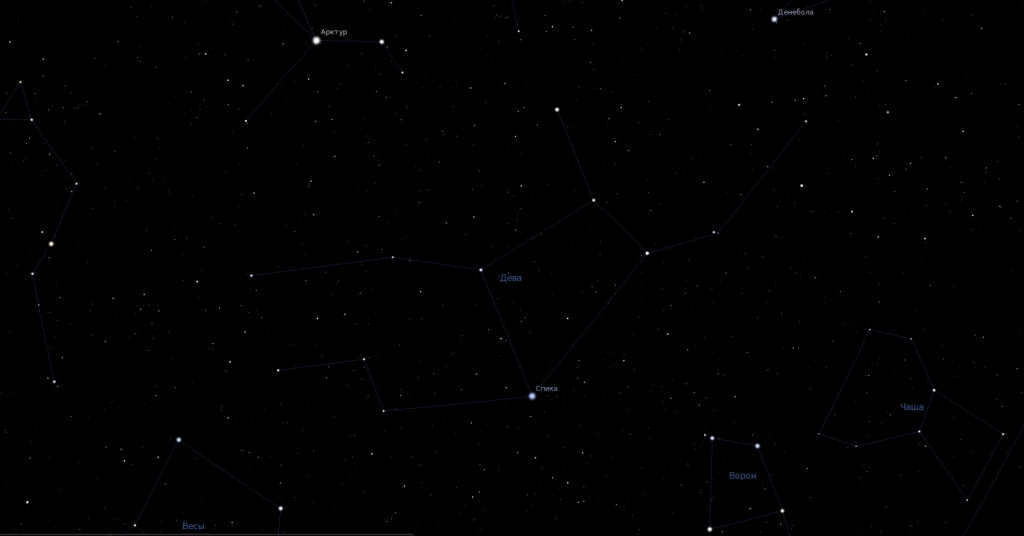
Image obtained from the planetarium software
Virgo is most visible during the early spring months, specifically from March to April, as it moves across the southern part of the sky. Due to its large size, the Sun remains in this constellation for over a month, starting on September 16 and lasting until October 30. In ancient celestial maps, Virgo was depicted as a maiden holding an ear of wheat in her right hand. However, not everyone can easily identify this image amidst the scattered stars. Nevertheless, locating the Virgo constellation in the night sky is not overly challenging. It contains a first magnitude star, which emits a bright light and makes Virgo easily distinguishable from other constellations.
Ways to locate it
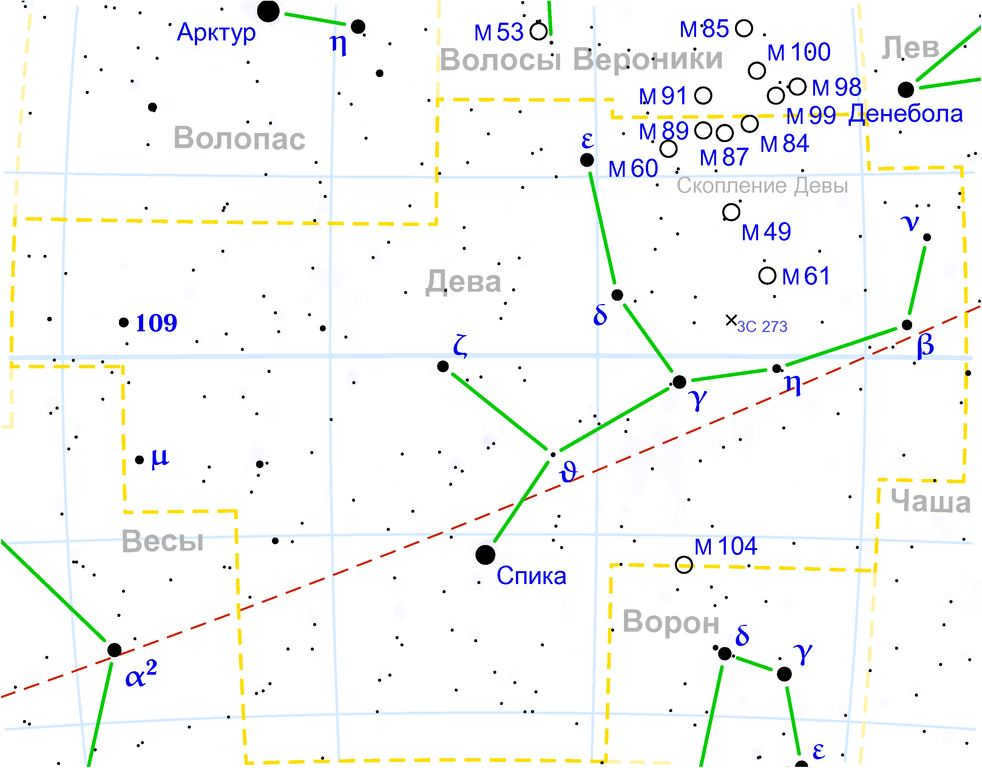
In order to locate the Virgo constellation, individuals residing in the Northern Hemisphere must initially locate the Bucket within the Big Dipper constellation. Subsequently, they can trace an imaginary line downwards from the handle of the Bucket. Initially, they will come across the orange star Arcturus from the Volopassus constellation, followed by the blue-white star Spica, which happens to be the brightest star within the Aquarius constellation. To confirm the accurate identification of the Virgo constellation, one must locate the small square on the right side, which represents the Raven constellation.
Alpha Virgo or Spica
Spica, also known as Alpha Virgo, is a bright star in the constellation of Virgo.
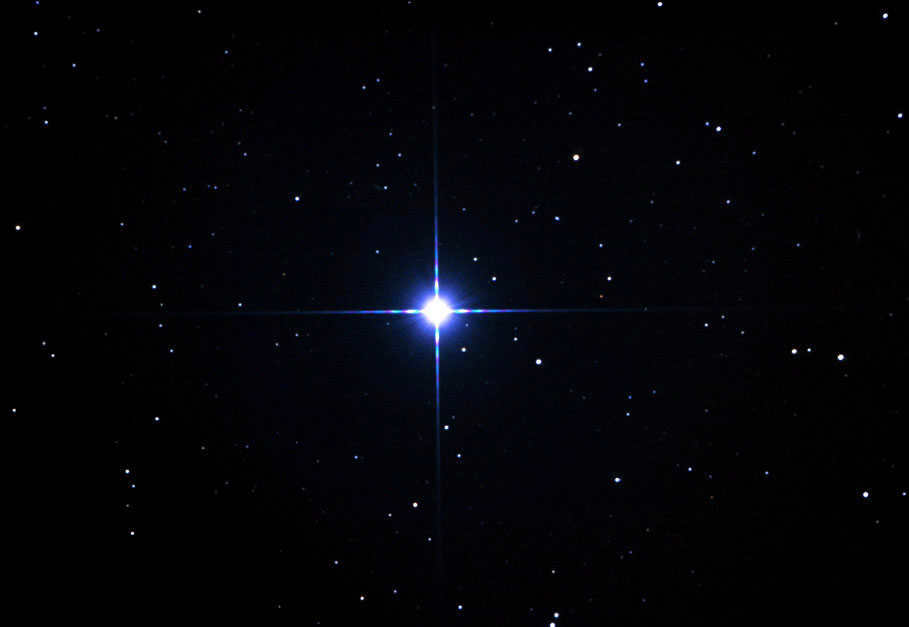
Let’s begin with the most prominent star in the constellation of Virgo – Spica. Its name comes from the Latin word for “ear of wheat”. This star is the largest within the constellation. It is worth noting that among the countless stars in the vast expanse of the sky, Spica holds the honorable sixteenth position in terms of brightness. Its apparent magnitude is approximately 1.04m. Fun fact: Spica can be observed not only in the night sky, but also on the national flag of Brazil.
Interestingly, the stellar magnitude mentioned above is not constant – it fluctuates between +0.92m and +1.04m due to the fact that Spica is a variable star. Another interesting feature of this star is that it is part of a binary system. Spica and its companion star orbit around each other with a period of four days. The distance between the two stars is relatively small, only 0.12 astronomical units, which causes both stars to have an ellipsoidal shape. Because of this, the surface area of radiation that is visible to us, the observers, changes periodically. These types of stars are classified as variable rotating ellipsoidal luminaries. Spica is the brightest example of this category of stars.
Spica: Fascinating Trivia
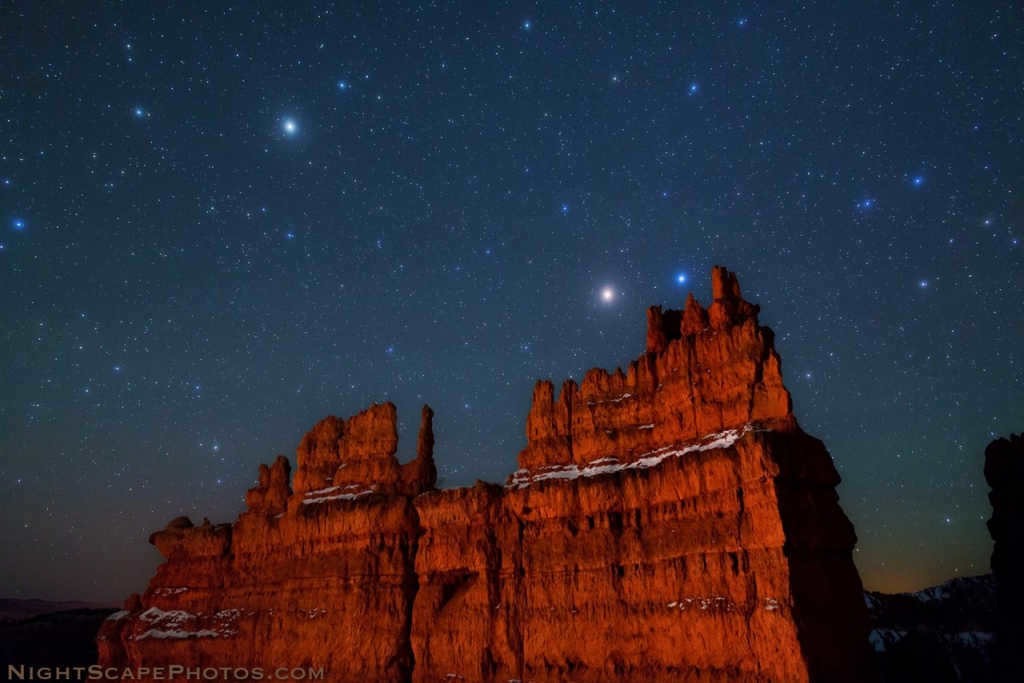
A photograph of Arcturus, Mars, and Spica captured against the backdrop of a scenic cliff in Bryce Canyon National Park, USA.
Here’s an interesting fact about Spica: it played a crucial role in the discovery of the phenomenon of precession. This remarkable celestial body resides in close proximity to the ecliptic, which means that it occasionally finds itself hidden behind the Moon. It’s even rarer to witness Spica being obscured by the planets of our solar system. The last recorded occurrence of this was in 1783 when Venus eclipsed this star. The next planetary eclipse of Spica is forecasted to take place in September 2197. The wait for this celestial spectacle is certainly “worth it.”
Yet another binary star located in the Virgo constellation
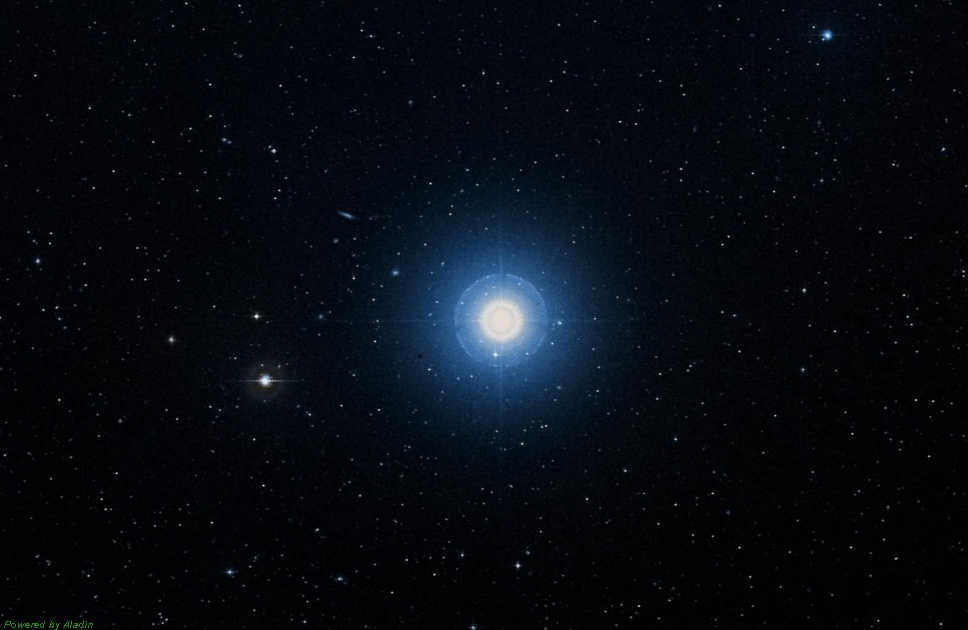
Porrima or gamma of Virgo can be found in second place in terms of brightness, following the alpha of Virgo. It is known by various names in the field of science. Astronomer A. Bechvar mentioned the name Arych in his atlas, although its meaning remains unknown. The more commonly used name is Porrima, which was the companion of an ancient goddess associated with predictions. Regardless of the name, Porrima is a double star with a visible magnitude of 2.75m.
Currently, the angular separation of the components of Porrima is three seconds. The largest convergence occurred in 2007, and by 2020 it is expected that the stars will be so far apart that both components will be visible again in small telescopes. The stars in this binary system are located on the main sequence. As a result, they undergo thermonuclear reactions involving the fusion of hydrogen and helium. Due to this, each star is individually more massive than the Sun by a factor of approximately one and a half. Porrima, similar to Spica, is in close proximity to the ecliptic, which means that there are also occasional lunar and planetary transits.
Windemiatrix: An Astonishing and Enigmatic Celestial Body
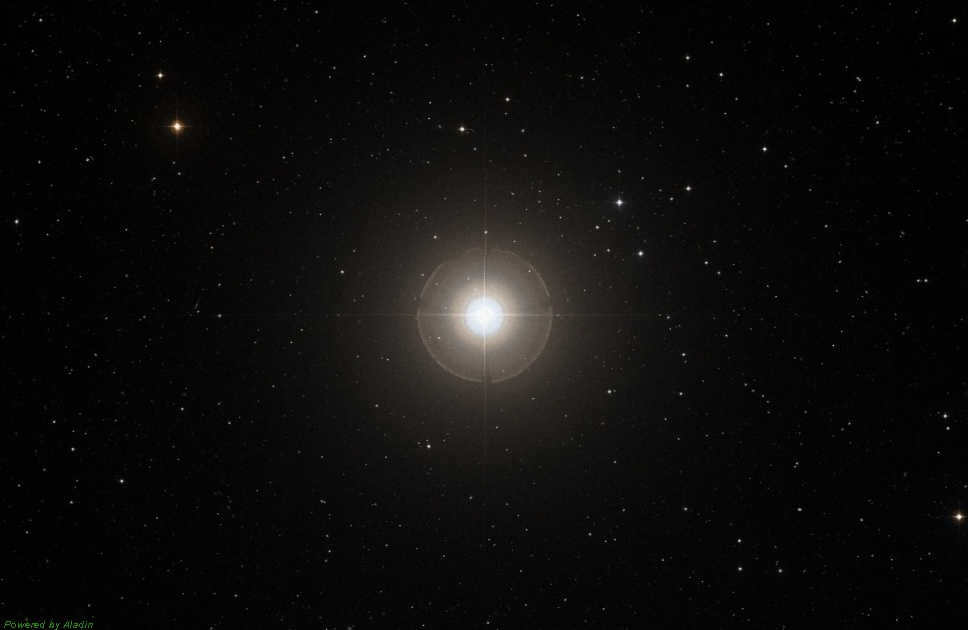
Image of Vindemiatrix or epsilon star of the Virgo constellation
Epsilon Virgo has a rather complex name, but its translation from Latin is quite simple – “winemaker”. It has an apparent magnitude of 2.83m, making it slightly less bright than Porrima and Spica mentioned earlier. It’s worth noting that Vindemiatrix is also a yellow giant star and belongs to the spectral class G8III. The surface temperature of Epsilon Virgo is slightly lower than that of the Sun, around 4990 K. However, its luminosity is about 83 times stronger than that of the Sun. It is important to mention that Vindemiatrix is located 102 light years away from us. Taking into account all these parameters, we can estimate its radius, which is approximately twelve times that of the Sun.
Note that Windemiatrix is classified as a binary star system. Its companion star has a magnitude of 11.7m and belongs to the K0 spectral class. Moreover, this star is enriched with elements heavier than hydrogen, being 15% more abundant in such elements compared to the Sun. Interestingly, it is nearing the end of its hydrogen reserves. Considering that Virgo’s epsilon is three times more massive than the Sun, it is plausible that Windemiatrix was initially a blue-white B-class star. It is possible that it is currently in the transitional phase of hydrogen burning to helium, or the process of helium transforming into carbon has already commenced in its core.
Astronomical Entities in the Constellation of Virgo
Aside from an extensive array of stars, this zodiacal constellation boasts a plethora of unique entities. For instance, one can observe a particularly intriguing celestial phenomenon known as a quasar.
Quasar 3C 273
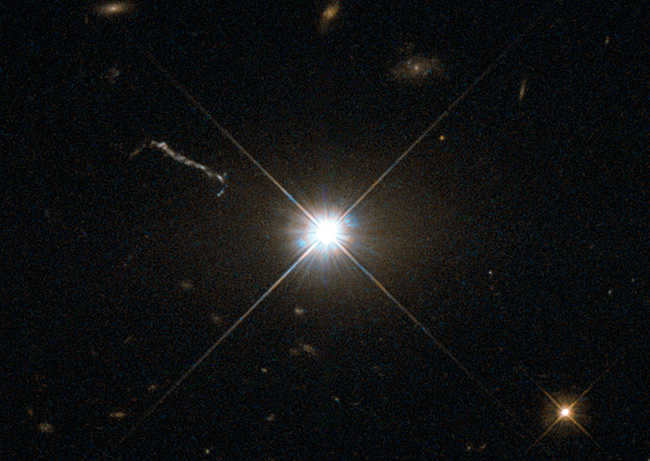
Virgo is the location of the most luminous quasar known as 3C 273, with a visual magnitude of twelve. This quasar is situated approximately two billion light years away from Earth. It is truly mind-boggling to think that when we observe quasars, we are witnessing the same light that was emitted billions of years ago, when life on our planet was still in its early stages.
3C 273 holds the distinction of being the first quasar to be identified by scientists. Since its discovery in 1963, it has been subject to extensive research. Interestingly, scientists actually detected this object in 1959, but at that time, it was only regarded as a significant radio source. Today, 3C 273 is classified as a radio-loud quasar and is recognized as one of the earliest extragalactic objects.
There are many galaxy clusters in the constellation
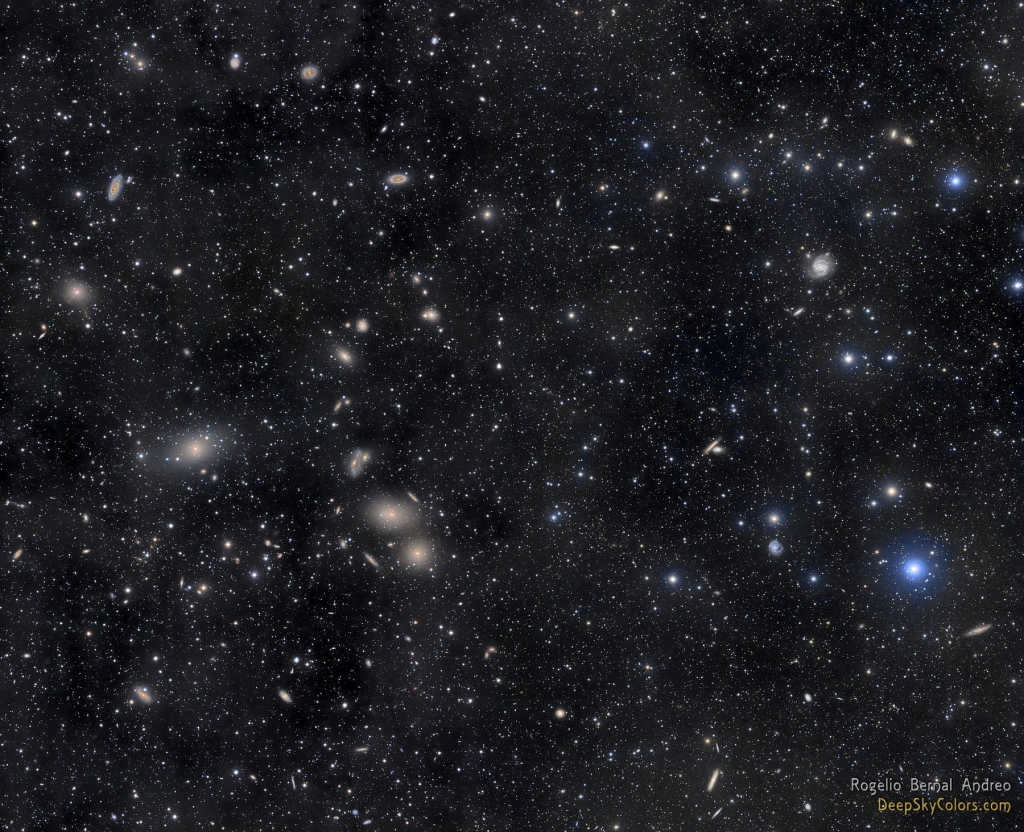
Image of a cluster of galaxies in the Virgo constellation
Scientists have always been fascinated by the Virgo constellation, particularly when it comes to studying galaxy clusters. By observing the area in the upper right corner of Virgo, where the stars delta, gamma, and epsilon form, one can spot over 2,500 distant galaxies. This portion of the sky extends beyond Virgo and into the neighboring constellation of Veronica’s Hair. The cluster resembles a distant cloud, so far away from us that its light takes billions of years to reach Earth. Similar to quasars, these galaxy clusters provide insights into the history of our Universe.
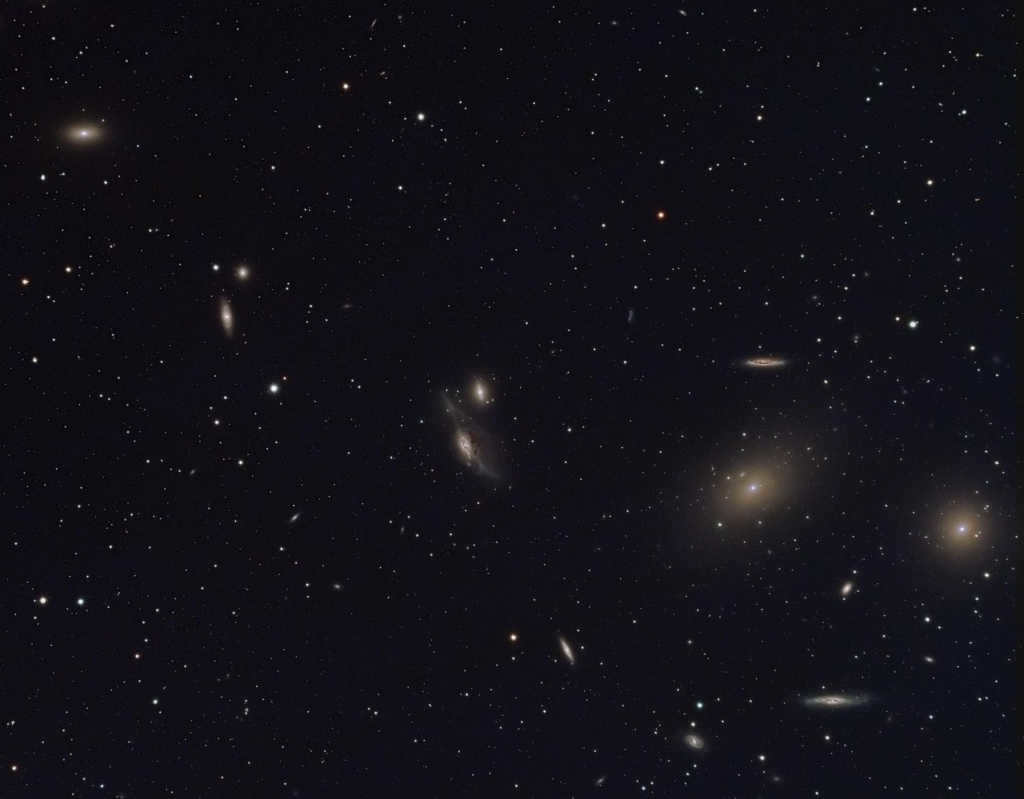
Picture. The center of the Virgo cluster of galaxies is traversed by an extraordinary series of galaxies known as the Markarian chain.
A bit closer, at a distance of approximately 59 million light-years, lies the Virgo galaxy cluster, consisting of an average of 1500 galaxies. This group of galaxies is in close proximity to Earth and is physically connected to the Local Group, which includes our own Milky Way galaxy. The most notable members of this cluster are recognized as Messier objects (M): 49, 58, 59, 60, 61, 84-91, 98-100. In the immediate intergalactic vicinity, this group of galaxies holds dominance. Being the central hub of a local cluster of galaxies, it not only has the ability to exert influence on the surrounding galaxies but also to absorb those that were previously unassociated with it due to the force of gravity.
The most well-known “virgin” objects in the Messier catalog
M86 Galaxy
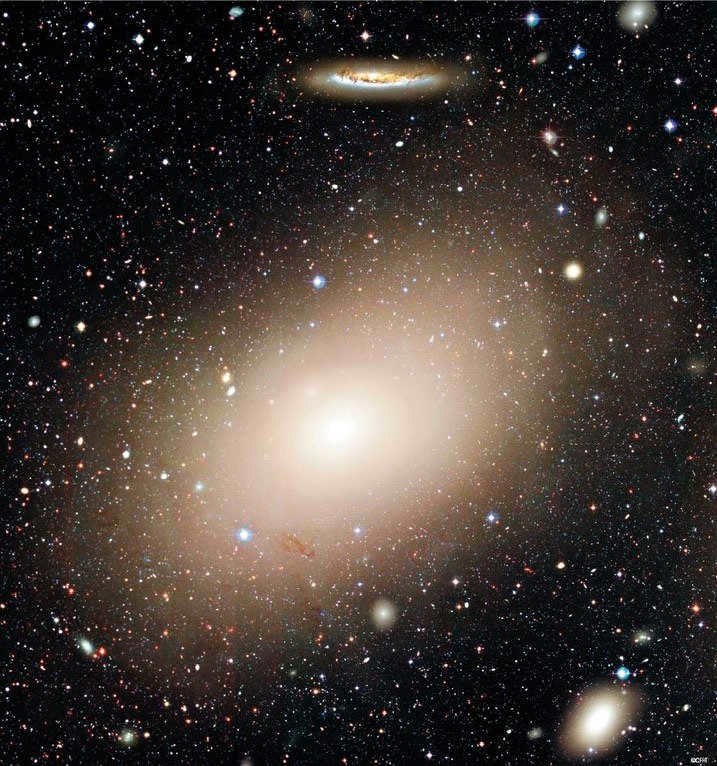
Photograph – the center of attention in the Virgo Cluster is taken by Messier 86, a massive galaxy.
The Virgo cluster of galaxies is home to over 1,500 members, but there are four that stand out. Let’s focus on the first one – the elliptical galaxy M86. Positioned at the very core of the Virgo galaxy cluster, this colossal galaxy is rapidly approaching the Milky Way at an average speed of 245 km/s. It is located 52 million light years away from our planet.
Galaxy Virgo A
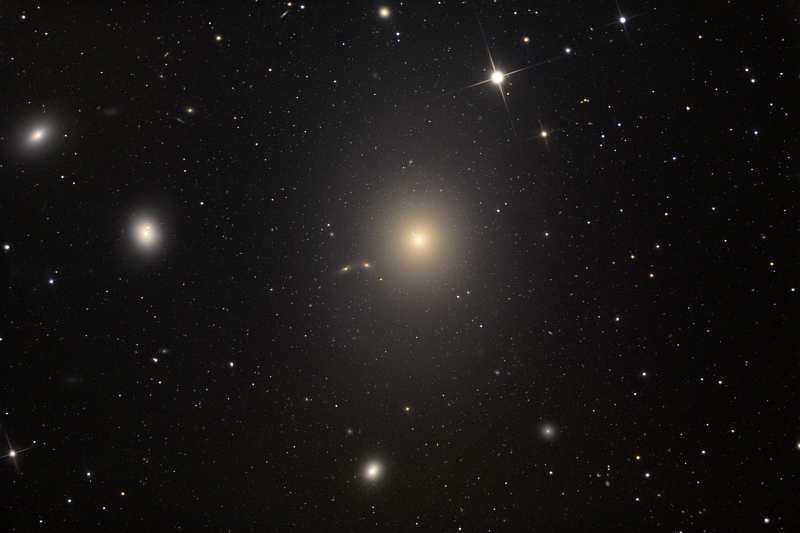
Image of the M87 Elliptical Galaxy
The following Messier object, known as M87 or Virgo A, is an elliptical galaxy located in the Virgo cluster. Not only is M87 the largest galaxy in the cluster, but it is also the largest among its neighboring galaxies. Situated approximately 55 million light years away from Earth, M87 unquestionably holds a dominant position within the cluster.
Galaxy M84 and M49
The galaxies M84 and M49 have a fascinating cosmic relationship. These celestial bodies, located in the Virgo Cluster, showcase the beauty and wonder of the universe. M84, a spiral galaxy, and M49, an elliptical galaxy, have captured the attention of astronomers and stargazers alike. With their unique characteristics and intricate structures, these galaxies provide a glimpse into the vastness of space. From their distant locations to their distinctive shapes, M84 and M49 tell a captivating story of cosmic exploration.
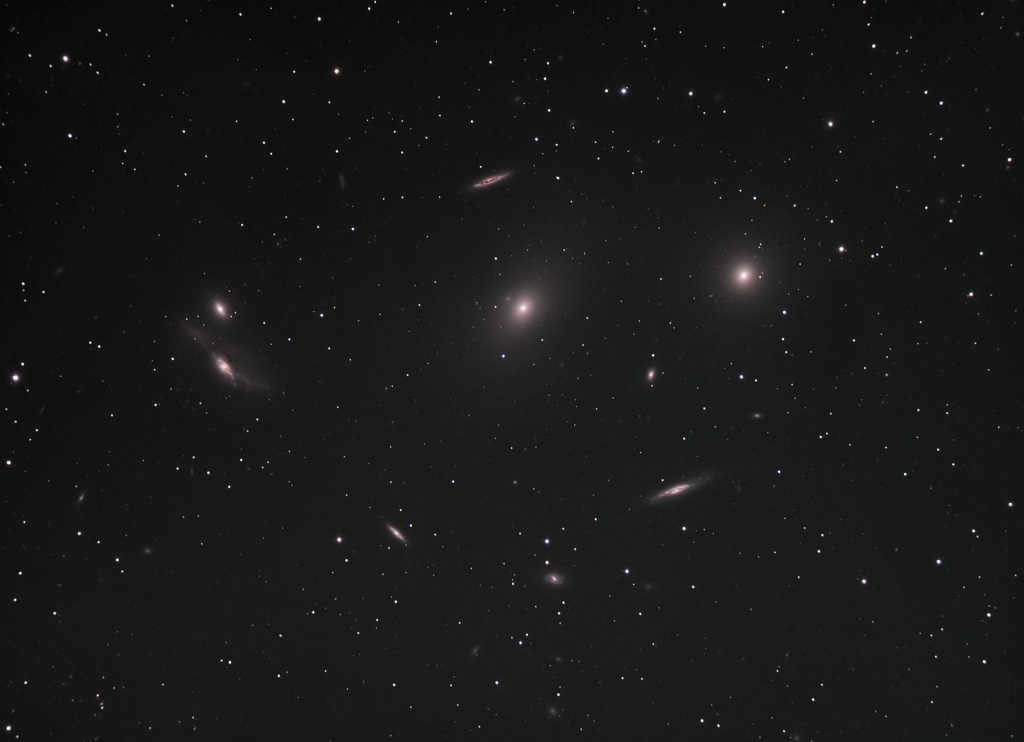
Here is a photograph of a cluster of galaxies in the Virgo constellation, which includes two main galaxies known as M84 and M86. The total exposure time for capturing this image was approximately 7 hours. The author of this stunning photograph is Shaun Reynolds.
One of the galaxies in this cluster, M84, is also classified as an elliptical galaxy. It is particularly notable because scientists believe that it contains a massive black hole within it. Another elliptical galaxy in this group is M49, which is located 49 million light years away from Earth. M49 is known as the brightest galaxy in this cluster. Additionally, a supernova star was observed in M49 back in 1949.
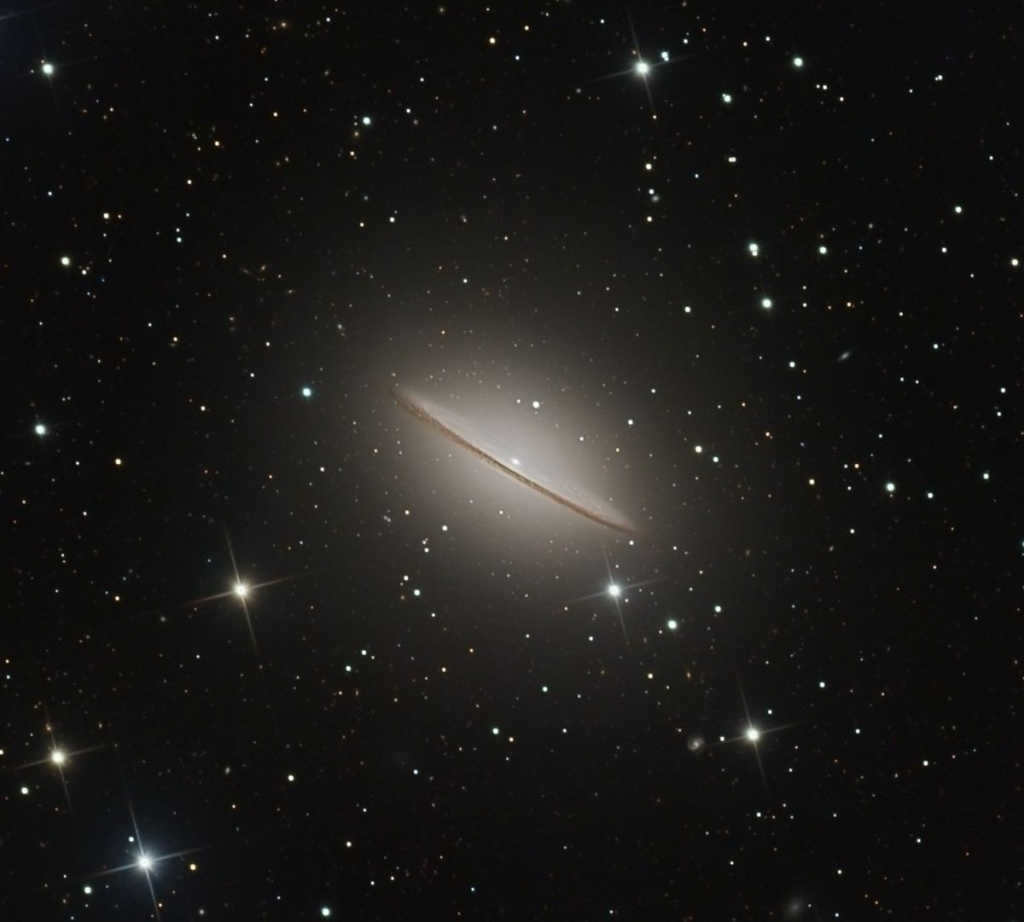
There is a stunning photo of the Sombrero galaxy taken by Ian Sharp, with a total exposure time of approximately 12 hours!
If you’re interested in the constellation Virgo, you should definitely check out the famous galaxy M104, also known as the Sombrero, due to its distinctive shape.
A Brief Overview of the Constellation’s History
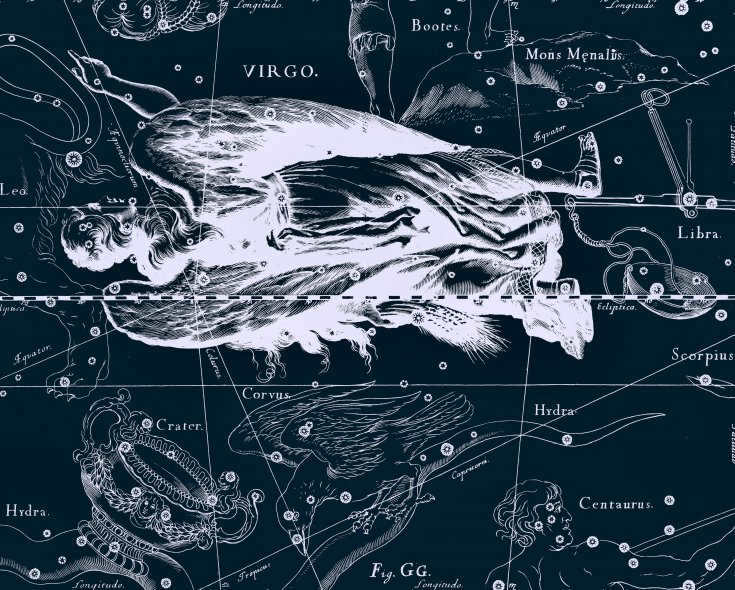

The drawing of the Virgo constellation was made by Jan Hevelius for his atlas of constellations.
Lastly, let’s make some room for mythology. When discussing the origin of the Virgo constellation, it is worth mentioning the Greek goddess Dica, who was responsible for justice. According to a belief, the goddess became so frustrated with humanity, their actions, and their sins that she decided to spread her wings and ascend into the sky, eventually settling near the Libra constellation. As we know, Libra is now closely associated with justice.
The celestial equator is a remarkable and one-of-a-kind phenomenon in the night sky. At this particular location, the constellation Virgo extends between Leo and Libra, creating a stunning and intricate pattern. What makes this constellation so appealing is not only its impressive size, but also the presence of bright stars, as well as various celestial objects such as distant galaxies, double and variable stars, quasars, and local clusters. These unique features capture the interest of both amateur and experienced astronomers, who are eager to explore and study this celestial marvel.
Where can you find the constellation?
The vast expanse within which the constellation Virgo is situated, along with its various descriptions in multiple sources, confirms that this star cluster has been observed since ancient times. The only competition that this group of stars faces in terms of size is Hydra, known for its enormous dimensions. Consequently, locating the constellation is not a challenging task, especially for seasoned astronomers. You don’t have to embark on a journey to the equator to witness this extraordinary pattern in the sky. The constellation Virgo can be easily studied from the territory of Russia, particularly during the months of March and April.
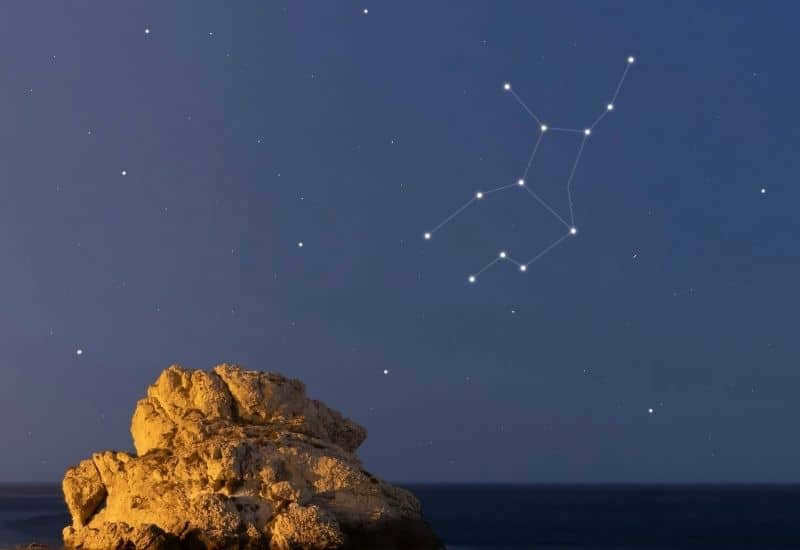
Without the need for special optics, the constellation Virgo is easily visible in the night sky. It has been recognized since ancient times and is associated with Demeter, the goddess of fertility, according to ancient Greek accounts. The ancient Egyptian chronicles mention that the appearance of this group of stars marked the beginning of the harvest. Being “positioned on the equator,” Virgo offers an ideal location for observation. Moreover, this constellation can be observed from both the northern and southern hemispheres. Its distinct pattern stretches between Leo and Libra, while its neighboring constellations are Corvus and Coma Berenices.
Equatorial constellation Virgo on the star map
The constellation Virgo is well-documented, and locating its unique pattern on a star map is a straightforward task for both seasoned astronomers and casual space enthusiasts. By following the handle of the Big Dipper and extending a line towards Arcturus, one can easily identify the reference point. The journey will culminate at the bright star Spica. To confirm the route, one can look to the right and observe the constellation Raven, which resembles an irregularly shaped square.
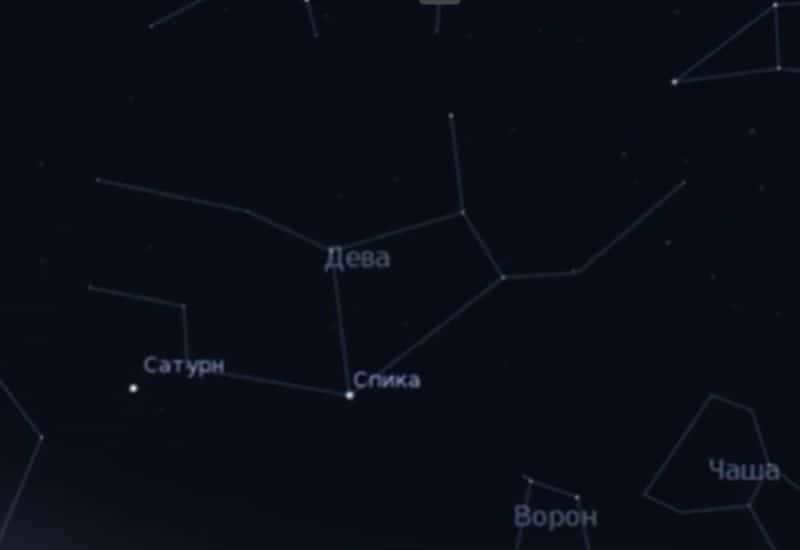
Recognizing the Virgo constellation in the night sky
Spotting a distinct constellation in the night sky is a simple task, especially for observers located in countries that intersect with the equator, such as Indonesia, Maldives, Sao Tome, and others. This unusual group of stars stands out due to its large size and intricate pattern. To get an idea of what the Virgo constellation looks like, one must gaze into the clear sky, locate the designated markers, and visualize the characteristic image of a young girl amidst the scattered stars.
The constellation Virgo is significantly larger than the constellations that surround it historically, making it much more fascinating for astronomers and astrophysicists due to its unique pattern and the numerous celestial objects it contains. One of the most prominent stars in Virgo is Spica, which is represented by a sheaf of ears held in the left hand. Additionally, there are other bright stars located above and to the right of Spica, including Vindemiat, Zaviyava, Delta, Zeta, Eta, and Iota, which symbolize different parts of the body. This makes it relatively easy to visualize the constellation of Virgo.
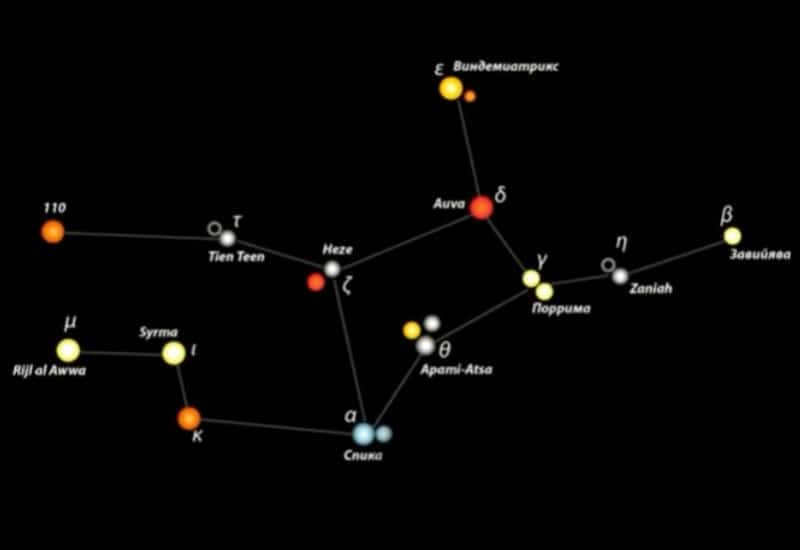
An exceptional assortment of celestial bodies is worth observing from the Russian territory. The optimal time for observation is during the spring season. The constellation moves into the southern hemisphere in the months of March and April, making it accessible for study. The second half of summer, late autumn, winter, and spring are ideal for conducting scientific research, as the cluster of stars is situated in the mid-latitudes. Astronomers also take into consideration another remarkable fact – between the dates of September 16 and October 30, the sun traverses through the constellation.
The primary celestial body in the Virgo constellation is known as Spica (A, B). When observing a star chart, it can be found in the lower left region and symbolizes a bundle of ears. Extensive research has confirmed that Spica is a binary system, with a blue subgiant of spectral class B1 serving as the main star. Accompanying Spica is its smaller counterpart, known as A, which shares a similar classification of B2. The proximity of these stars is quite close, and their orbital path is described as ellipsoidal according to the most recent data available.
Spica – the most prominent star in the Virgo constellation is not the only celestial body visible from Earth. Other stars that are often highlighted include Zaviyama, Porrima, Minelauva, and Windemiatrix. These cosmic objects are distinguished by their luminosity, mass, parallax, and distance from the planets in the Earth’s group. Among the discovered stars, Windemiatrix, a double star, is of particular interest to astronomers. The companion of this yellow giant is classified as a K0 spectral class object.
The brightest celestial body in the constellation is Spica, also known as α Virgo (Alpha Virgo)
Spica is the most prominent and radiant star in the Virgo constellation:
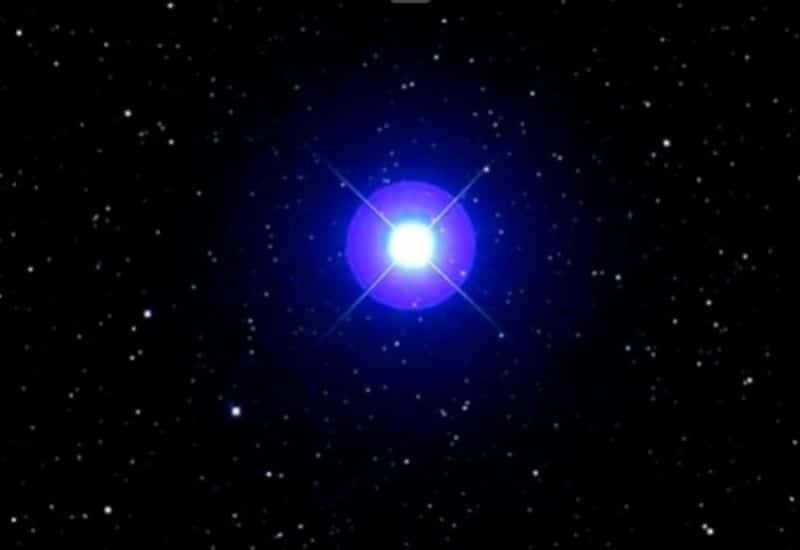
- The distance to the planets in the Earth group is 80.3296 parsecs;
- The temperature is 22/18 K;
- The rotation speed is 130 km/s;
- The direct ascension is at 13h 25m.
The separation between companions measures 0, 12 astronomical units.
β Virgo, also known as Zaviyava.
A celestial entity of pale yellow color situated below the head of the distinctive stellar configuration:
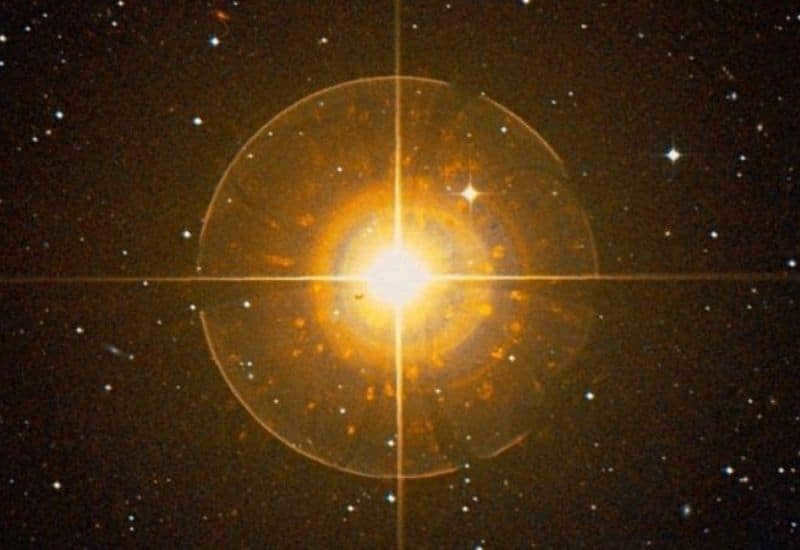
- the distance from the sun is 11.0377 parsecs;
- the temperature is 6140 K;
- the rotation is 4.3 km/s;
- the direct ascension is 11 h 50 m.
There have been recent sightings indicating that there are multiple planets in rotation.
Porrima, also known as γ Virgo (Gamma Virgo), is the second most luminous star.
Based on the most recent computations, it has been determined that this star is part of a binary system and is included in the catalog of nearby objects in this category.
Both components are yellow-white stars with the same F spectral class:
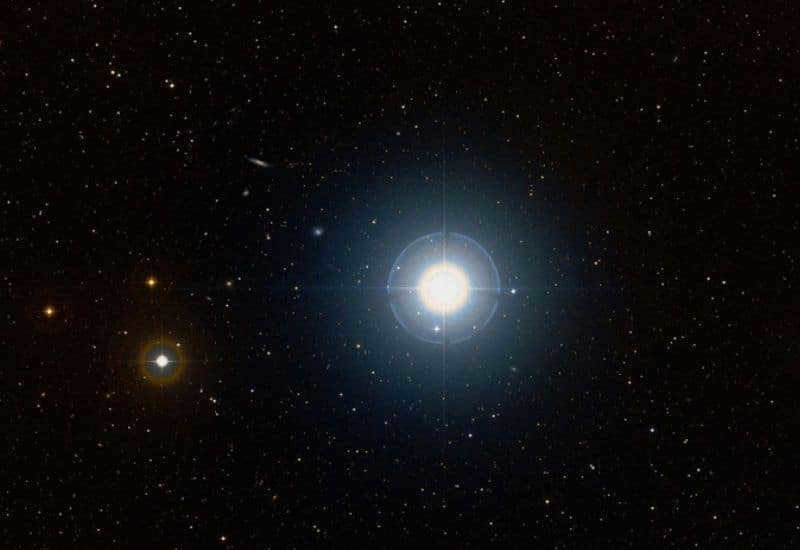
- The distance to Earth is 11.6509 parsecs;
- The temperature is 7043 K;
- The rotation is 31, 36 km/s;
- The direct ascent is 12 hours and 41 minutes.
Due to its proximity to the ecliptic, Porrima has the potential to be orbited by a natural satellite of Earth.
The star Minelauva, also known as δ Virgo (Delta Virgo)
Can be observed without the need for astronomical optics.
This red giant star belongs to the spectral class M3:
- Distance to Earth-like planets is 60.7071 parsecs;
- Temperature is 3999 K;
- Rotation speed is 6.0 km/s;
- Has a direct ascent of 12 hours and 55 meters.
The data suggests that Minelauva is also a binary star.
The star Windemiatrix, also known as ε Virgo (Epsilon Virgo), is a prominent celestial body.
Regarded as the third most luminous star, it falls under the category of yellow giants with a spectral class of G8:
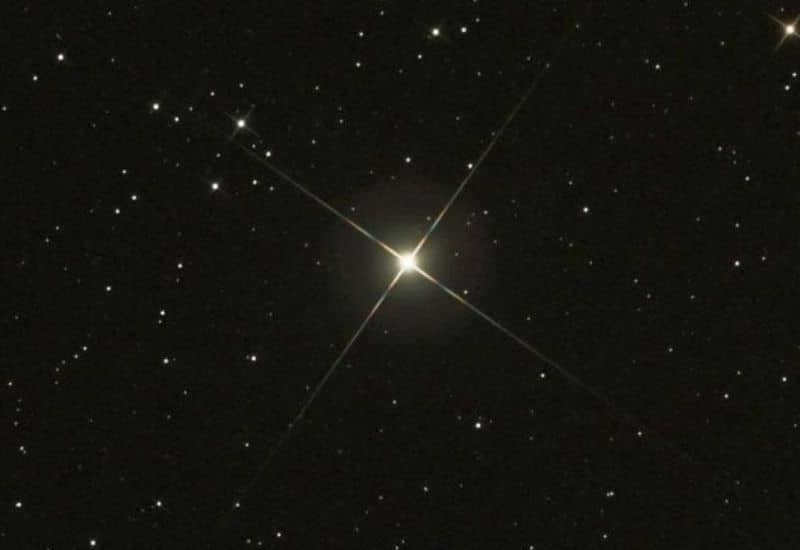
- The distance between Virgo Epsilon and the sun is 31.028061 parsecs;
- The temperature of Virgo Epsilon is 4990 K;
- Virgo Epsilon has a rotation speed of 2.3 km/s;
- Virgo Epsilon has a direct ascent time of 13 hours and 2 minutes.
Spica and Porrima are the only stars that shine brighter in this constellation. It is believed that this star belongs to the Hyades group.
Notable celestial objects in the Virgo constellation
Virgo is classified as a sizable constellation, and as a result, astronomers extensively research various stars as well as other cosmic entities, anomalies, and so forth. Of particular interest are asterisms, elliptical and spiral galaxies, and the exceptionally luminous quasar 3C 273. According to prevailing knowledge, this was the first identified object of its kind.
The constellation is intersected by the celestial equator, which acts as a boundary between the southern and northern hemispheres. Notably, the head of the constellation is tilted slightly towards the north, enabling astronomers to uncover numerous remarkable findings. One such discovery includes a cluster of an extensive array of galaxies situated between the ε and υ stars. Based on the conclusions drawn by scientists, it has been determined that the center of the Supergalaxies lies within this particular region. This vast cloud comprises a staggering two and a half thousand diverse systems.
A cluster located in the Virgo constellation.
Virgo is famous for its other galaxy cluster – Virgo. This cluster contains more than 1,500 stars that are gravitationally bound together and is situated at a distance of 18,089,482.234 parsecs from the sun. These cosmic objects are part of the Local Group due to their close proximity, which allows gravitational forces to influence other star systems that are far away.
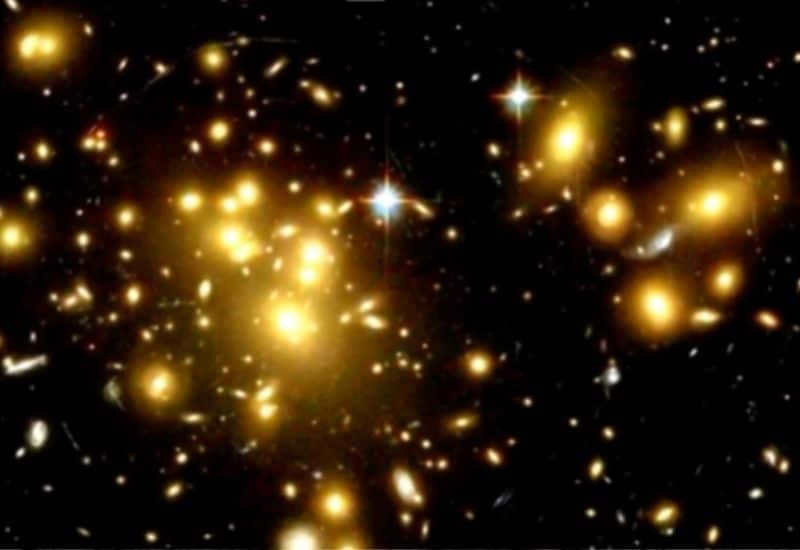
Messier 49 (M 49 or NGC 4472)
The constellation described contains one of the most brilliant groups of elliptical galaxies. Scientists were able to determine that this cluster is “independent” due to its strong gravitational impact on another star system, M59. Notably, NGC 4472 houses a supermassive black hole in its central region, a conclusion drawn from data collected by the Hubble telescope.
One interesting aspect of the galaxy is the existence of a erupted supernova. The cluster of stars that are gravitationally connected belongs to a group of similar entities in Virgo. Messier 58 can be observed using a non-professional telescope with an aperture of 150-200 mm. NGC 4579 has an oval shape with blurred boundaries. With the use of high-quality optics, it is possible to see the core. M58 is located at a distance of 19009286.416 parsecs from Earth.
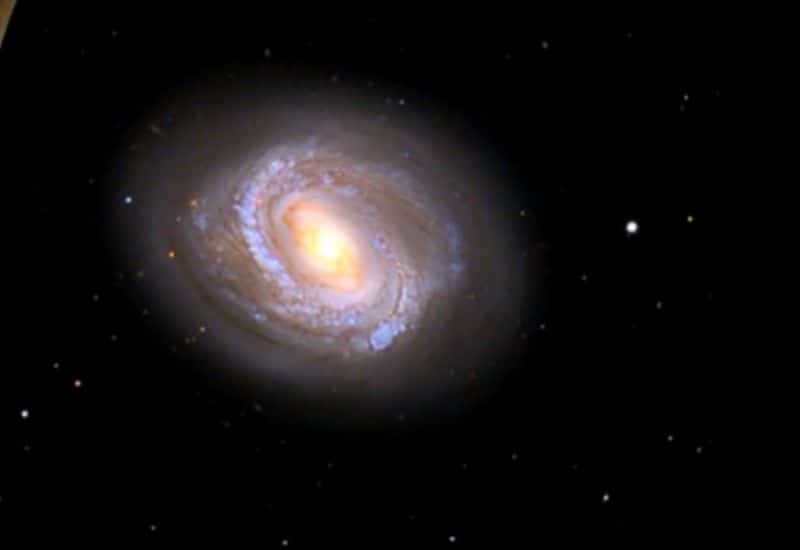
Sombrero-Messier Double Galaxy 104 (M104, NGC 4594)
The unique shape of the spiral galaxy NGC 4594 has earned it the nickname “Sombrero” due to its resemblance to a wide-brimmed Spanish hat. Recent observations from the Spitzer telescope have revealed the presence of a second galaxy within NGC 4594. Scientists believe that there is a supermassive black hole at the center of this galaxy. However, the orientation of Messier 104 makes it challenging to study in detail from our planet.
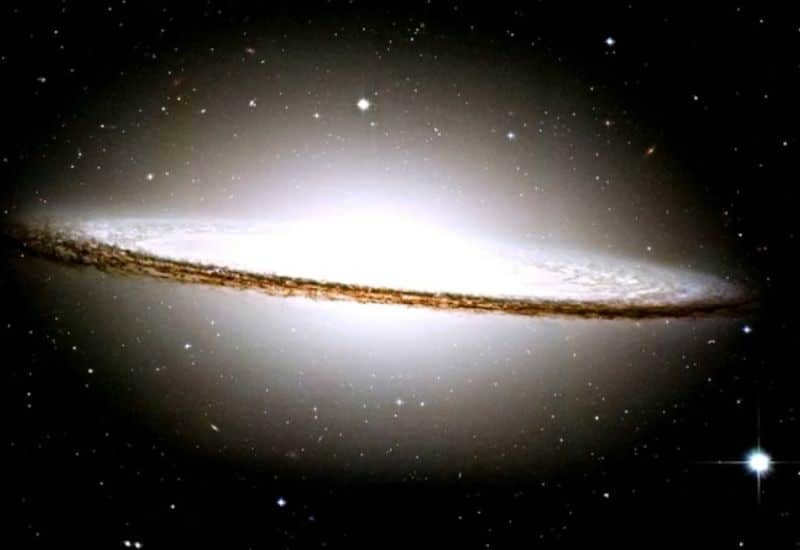
The extraordinary quasar 3C 273
Amongst other enigmatic extragalactic entities situated in the constellation, it is noteworthy to acknowledge the presence of the quasar 3C 273. The distance of this celestial object from the sun amounts to 613202787.6071 parsecs. This astronomically potent energy source was discovered by scientists in 1963 and, despite the passage of time, it remains the subject of intensive investigation. The vast distance poses a challenge to studying the quasar. Nevertheless, researchers have succeeded in classifying it as one of the brightest and closest blazars.
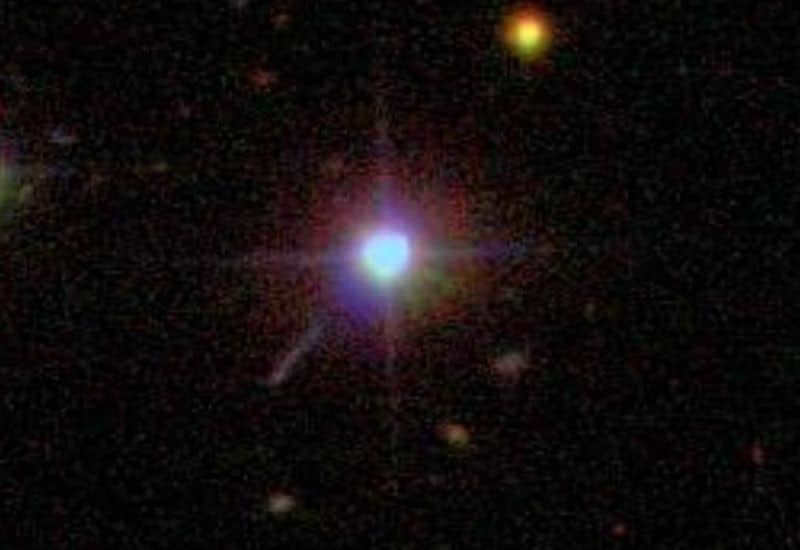
M86 – The Twin Galaxy
Located in the central area of the constellation, M86 is an elliptical galaxy that forms part of the Virgo cluster. This cluster of stars, held together by gravity, is currently moving towards the Milky Way at a velocity of 245 km/s. Based on the latest data, the estimated distance to M86 is approximately 17169678.053 parsecs. Through scientific observations, researchers have been able to identify strands of warm gas, consisting of ionized hydrogen. This significant discovery has led to the hypothesis that there could be a connection between Messier 86 and NGC 4438, two neighboring galaxies.
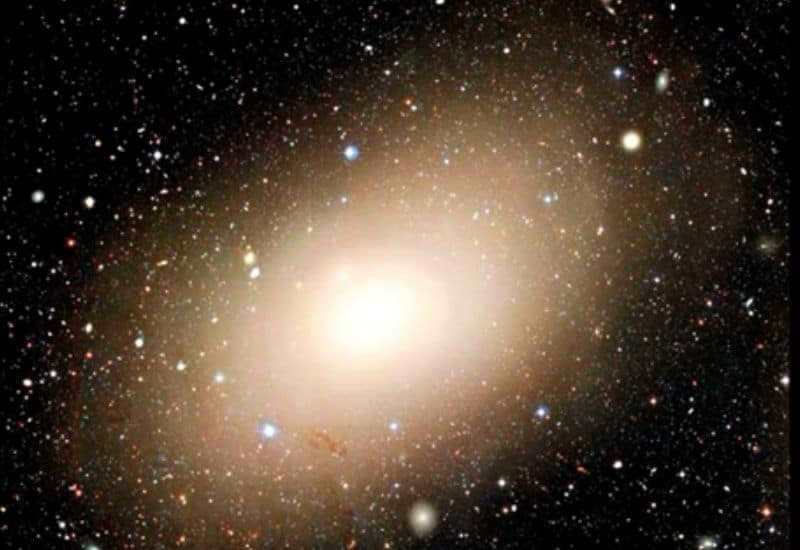
Virgo A galaxy
Virgo A is known as one of the largest intergalactic objects in the constellation. This galaxy falls into the E class (ellipticals) category and is positioned as a supergiant within the Local Supergroup. It holds the second spot in terms of brightness. The nucleus of this galaxy is highly active, which can be attributed to the presence of a massive black hole. Additionally, the galaxy emits X-ray radiation and produces jets due to its large size. The energetic plasma that is ejected from the center has spread over a distance of 1502.347 parsecs.
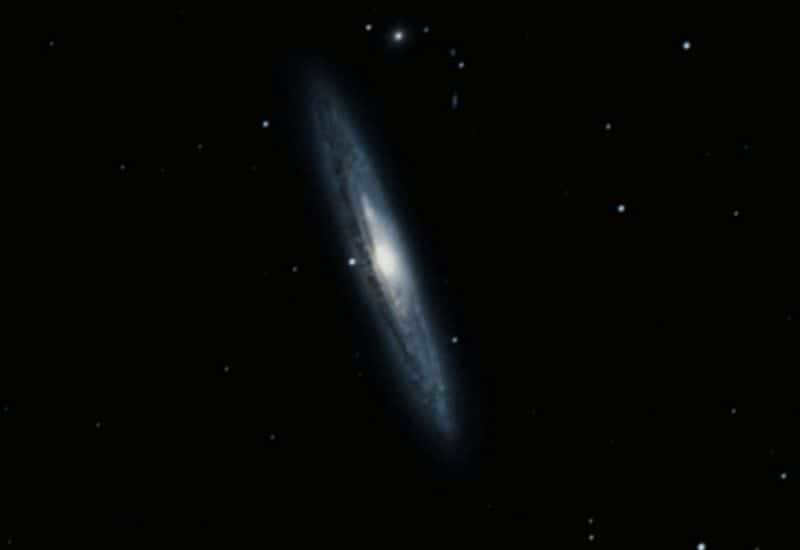
Interesting stories linked to the starry pattern Virgo
The etymology of the stellar arrangement’s title can be determined from existing accounts. According to one myth, the Ancient Greeks affiliated Virgo with the stunning Demeter – the goddess of fruitfulness, while another tale associates it with the youthful Persephone. Persephone, who annually returned from Hades’ realm, brought forth spring upon Earth, causing everything to awaken and flourish.
The myth surrounding the constellation Virgo tells a fascinating tale. According to ancient Greek lore, Astrea, the goddess of justice and daughter of Themis and Zeus, grew disheartened with humanity due to their continuous acts of wickedness, greed, and avarice. As a result, she made the decision to depart from Earth forever and ascended to the heavens, where she transformed into a renowned constellation. Positioned between Leo and Libra, this constellation serves as a symbol of balance and fairness, representing the concept of measure and justice.
